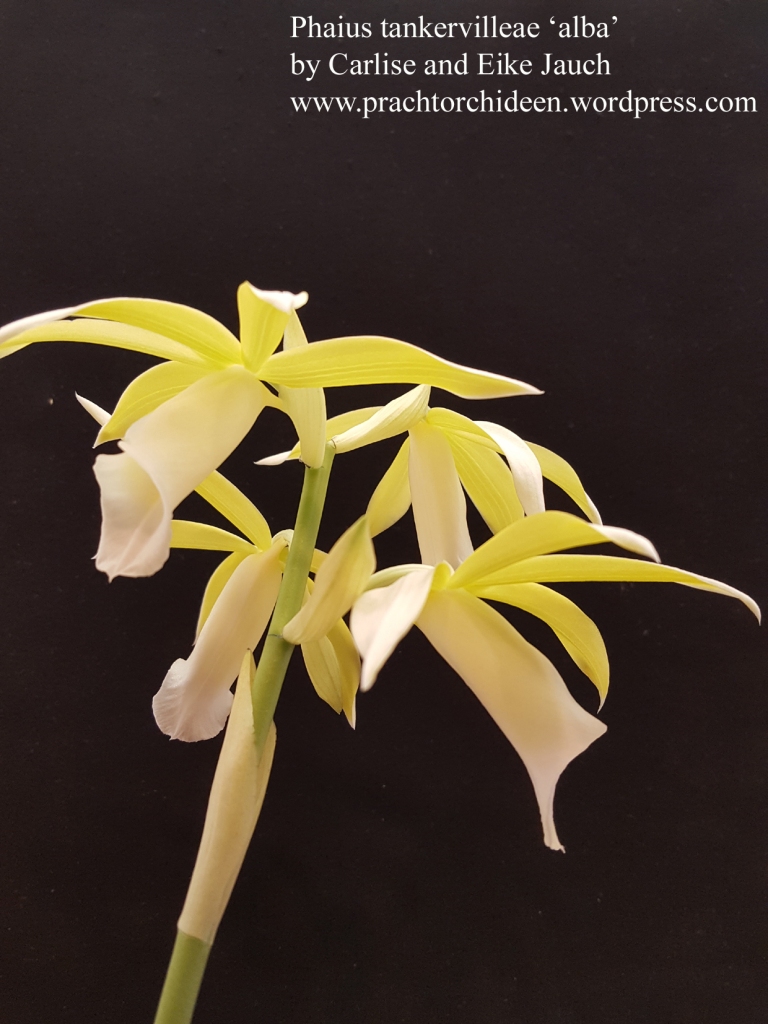
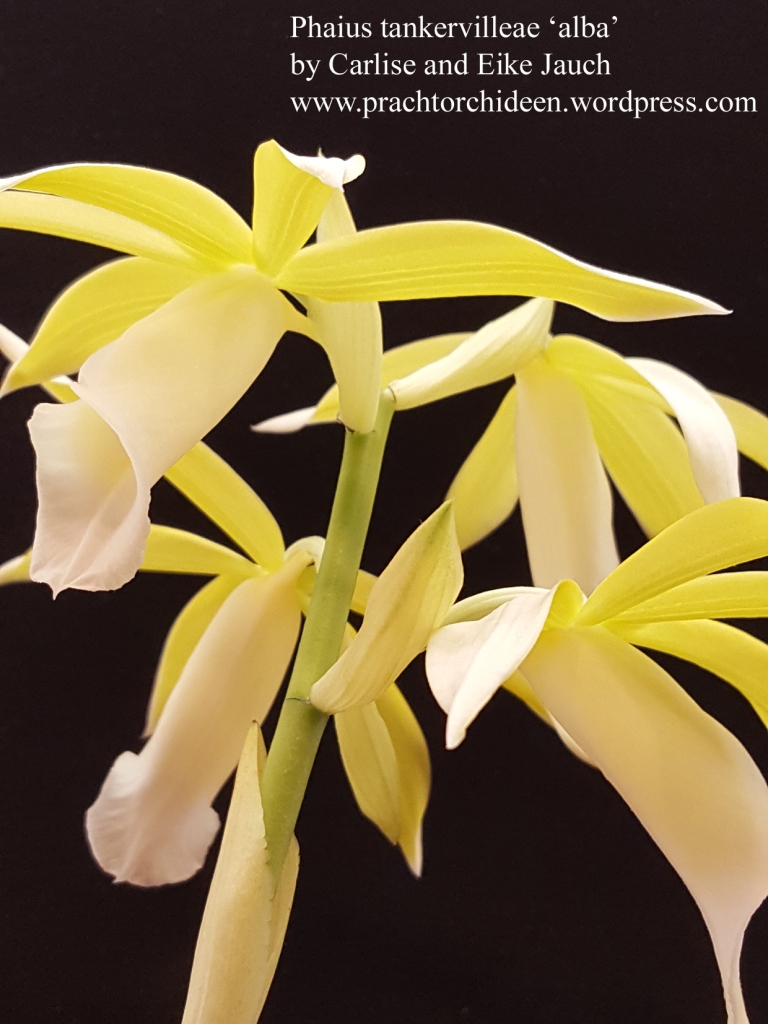
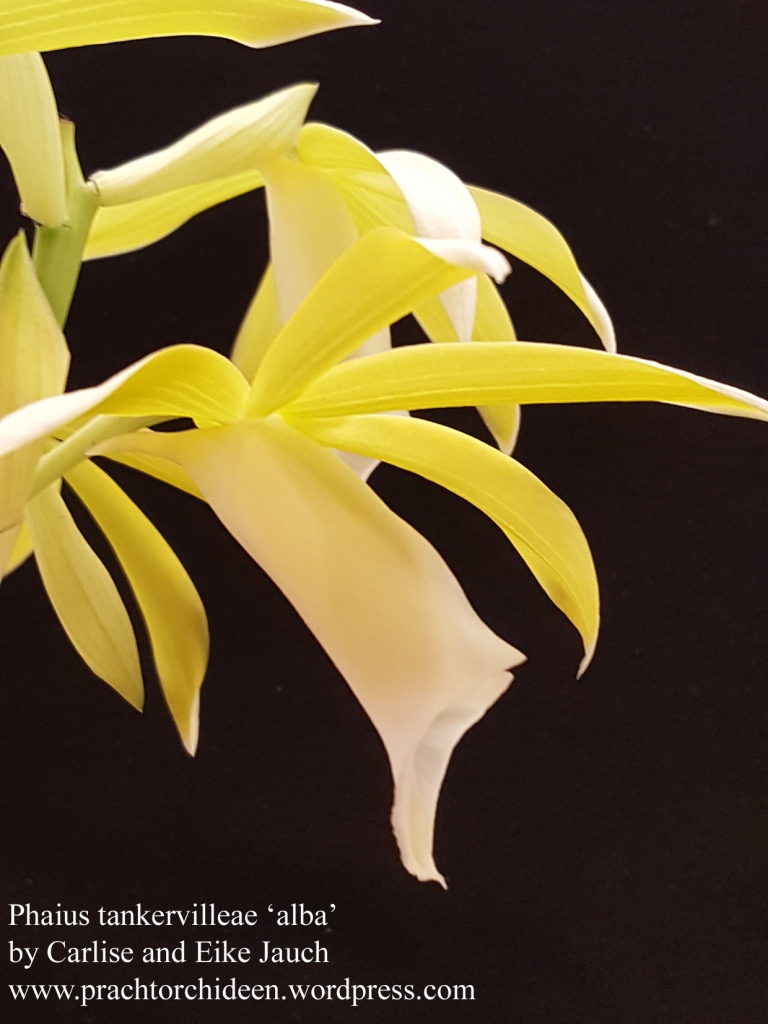

Macodes Jewel orchids and Phaius by Carlise and Eike Jauch
About jewel orchids like Macodes, Anoectochilus, Goodyera and more …



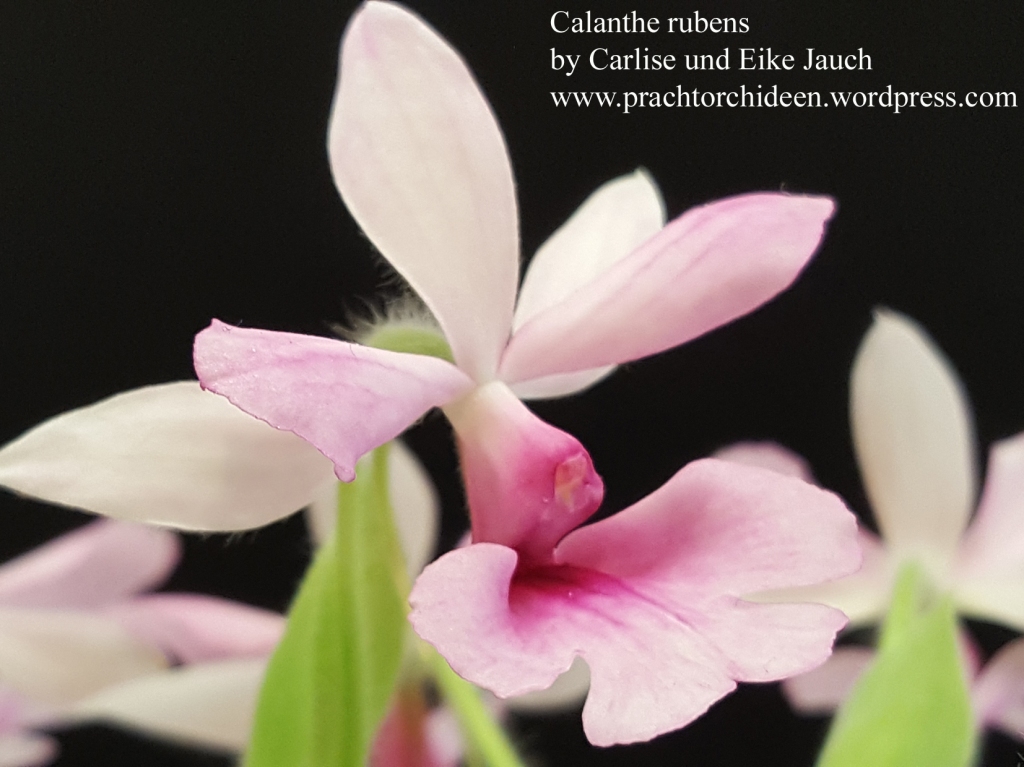
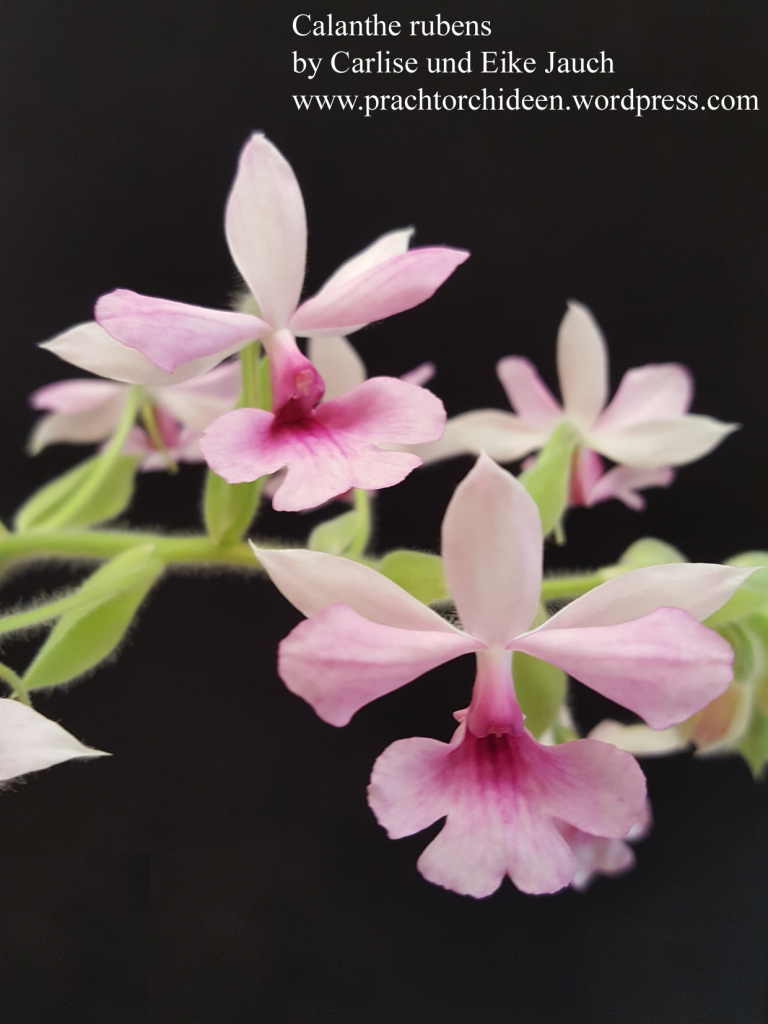
Among all Calanthe rubens we keep in our collection, this selection has the best lip form.
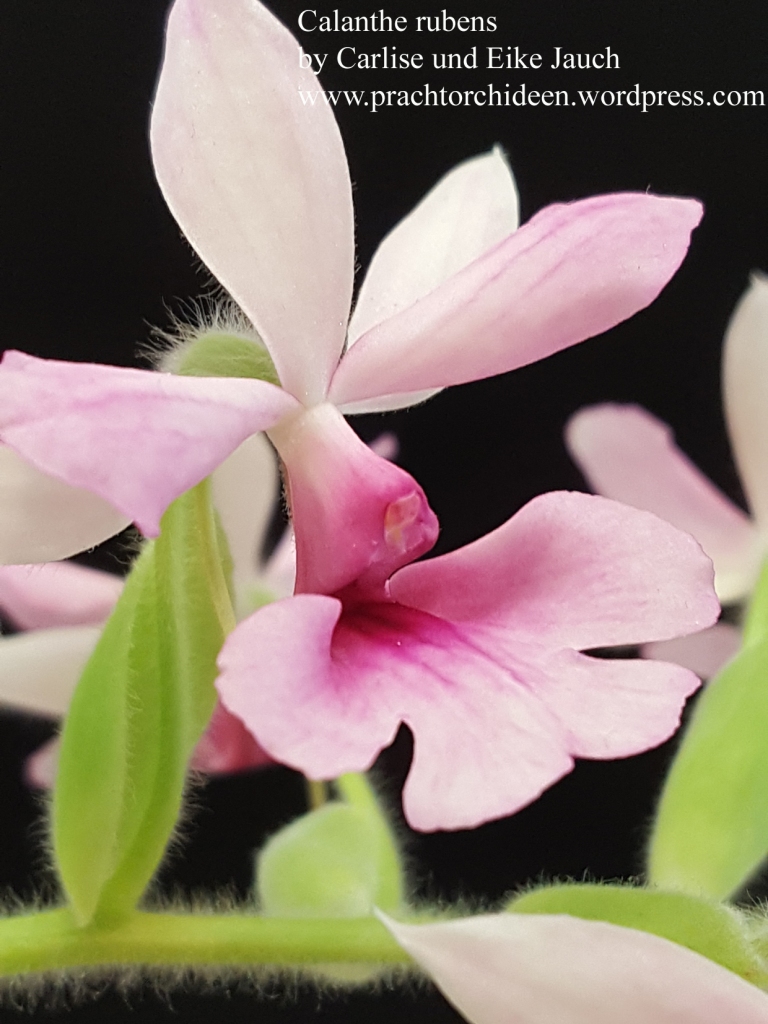
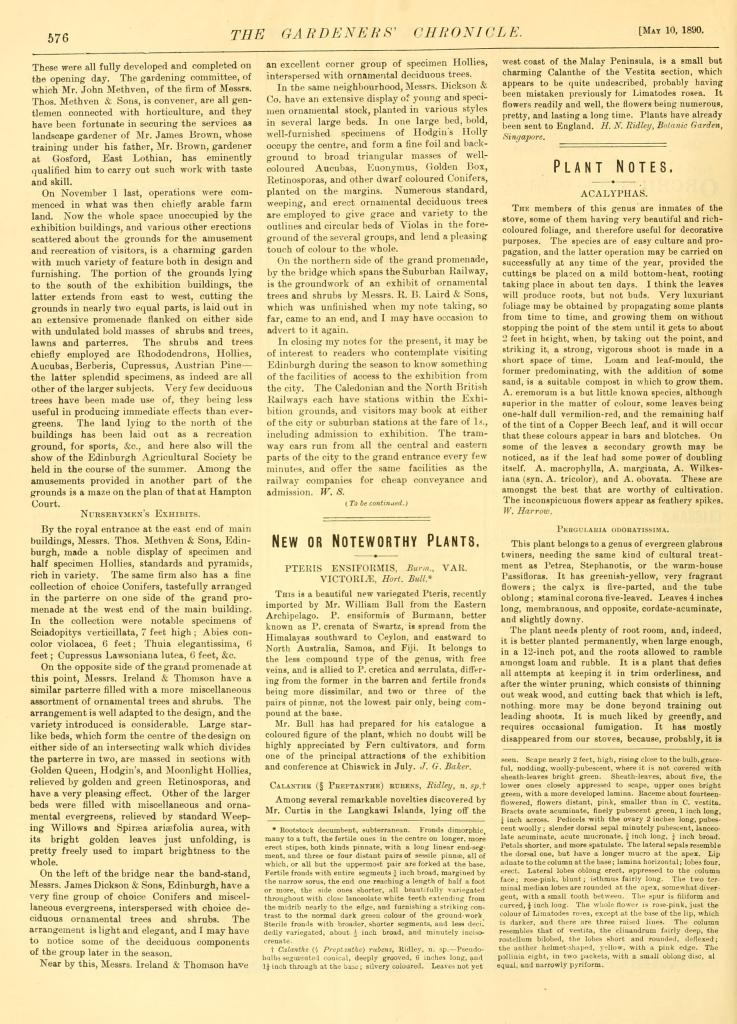
Four years ago I launched this blog to collect all kind of informations concerning Phaius and related genera. Today we travel back in history to have a closer look at the historical roots of the genus Phaius.
1787 the first drawing of a Phaius tankervilleae was made by Sowbery. The unique quality of this drawing easily allows to identify the depicted species.
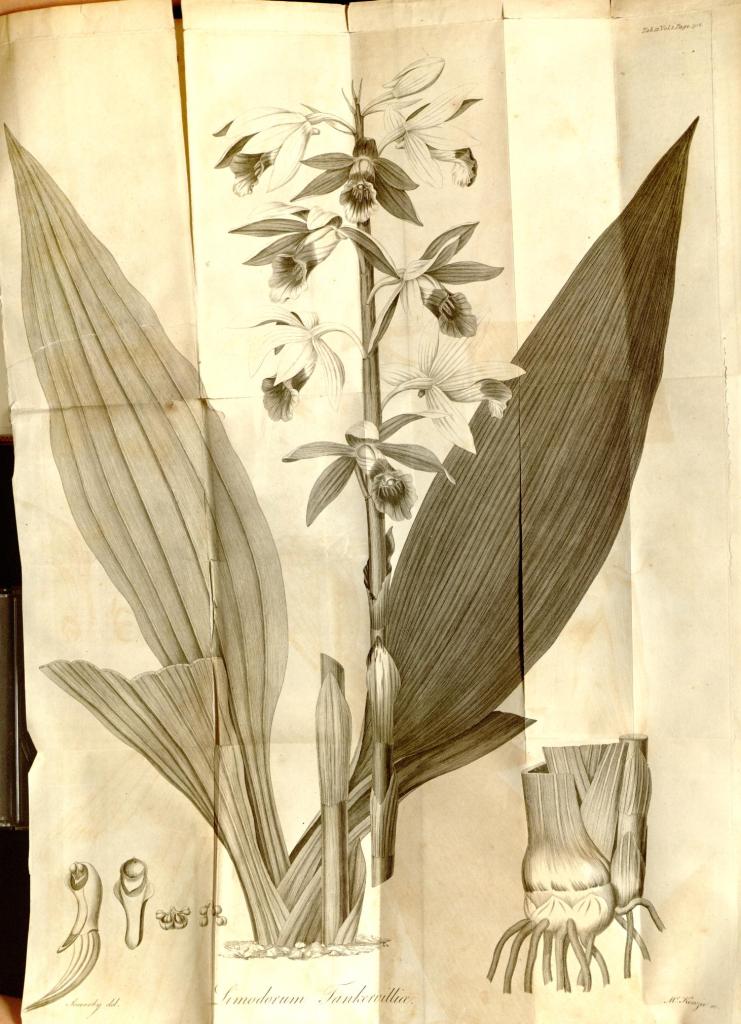
Note the short spur that distinguishes Phaius tankervilleae from Phaius wallichii
It was published in 1789 by William Aiton in his Hortus Kewensis volume 3 on table 12 as an engraving by MacKenzie from Sowbery’s original drawing.
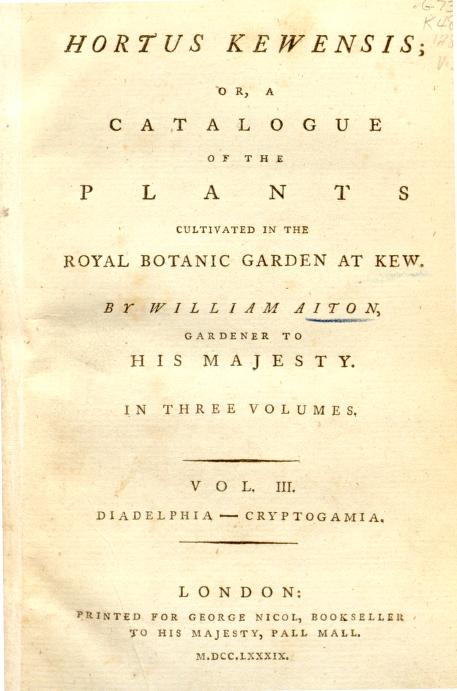
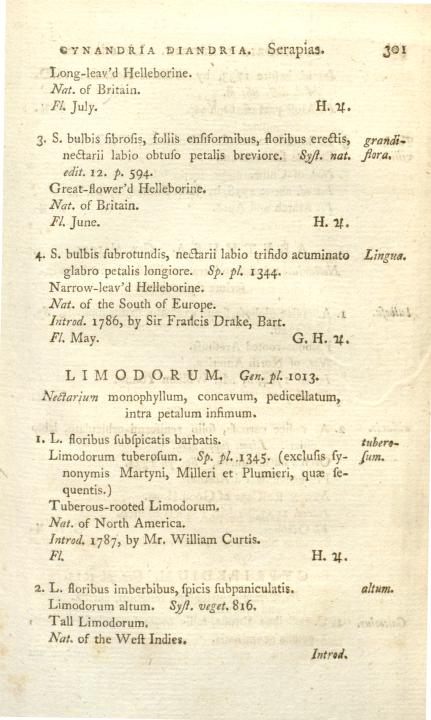
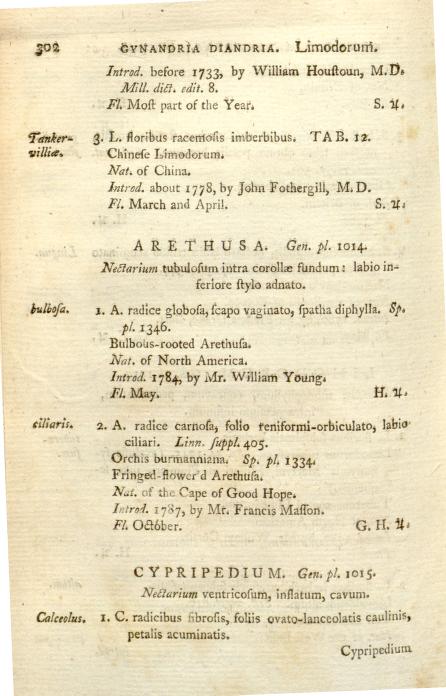
In 1788 the french botanist L´Hértier published a short descrition of Phaius tankervilleae in his Sertum Anglicum on page 28:
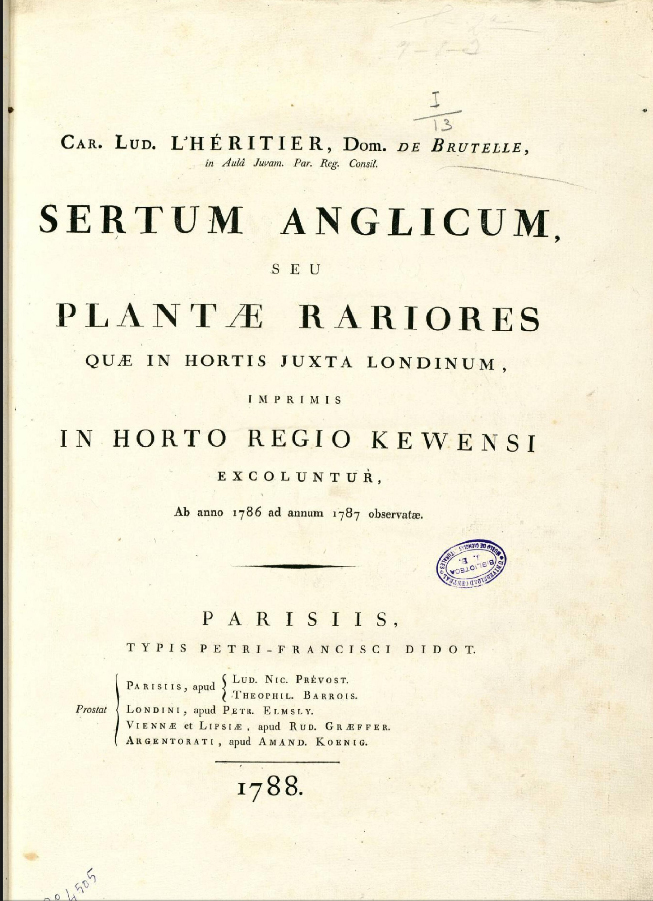
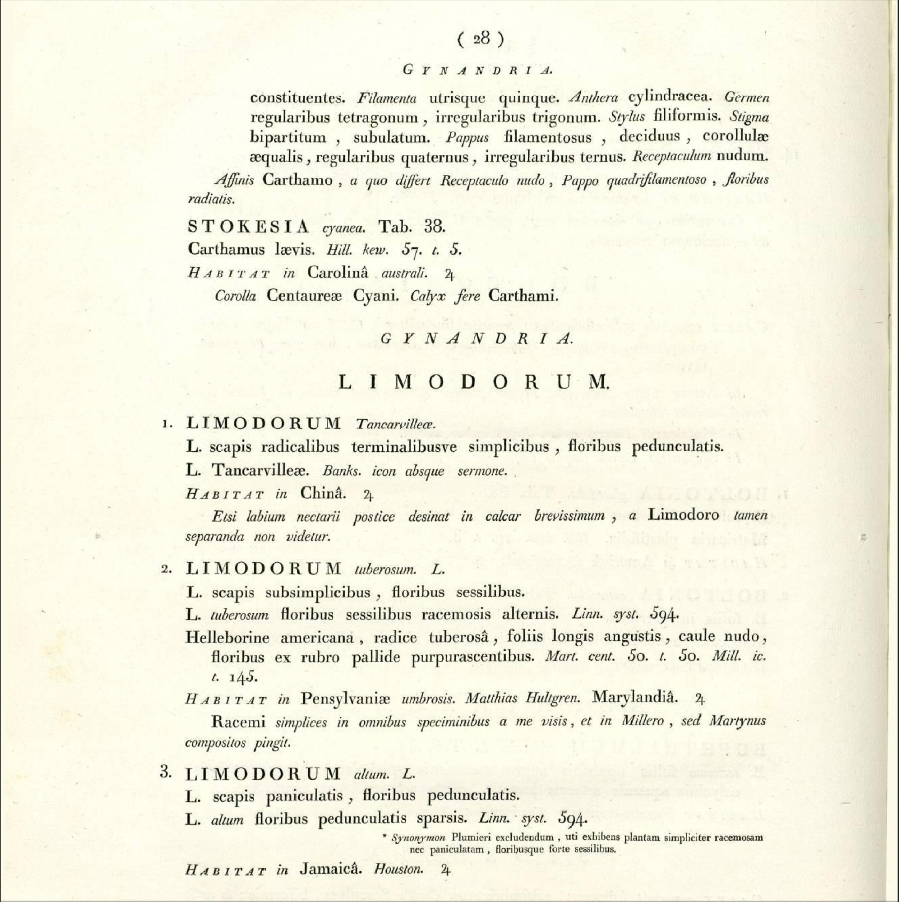
It was Joannis de Loureiro who introduced the genus Phaius in 1790 in his Flora Cochinchinensis.
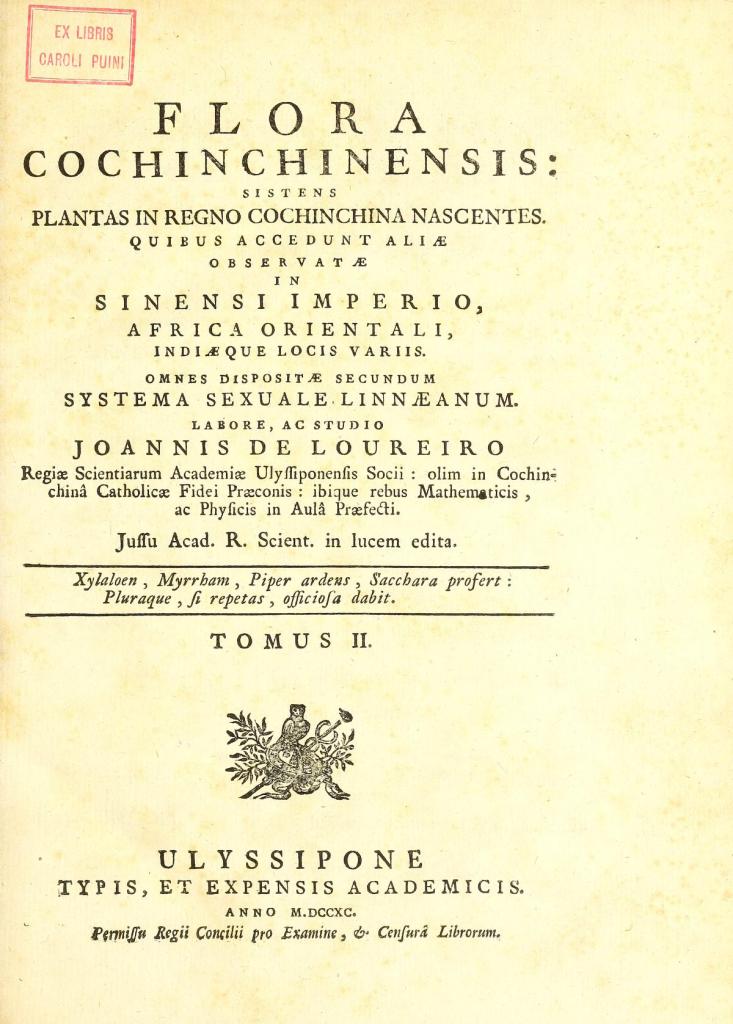

 phaios fuscus, which means dark brown. As it is not known how the described type specimen of Phaius grandifolius looks like it is unclear wether the described species is a Phaius tankervilleae or a Phaius wallichii. In general Phaius grandifolius is treated as a synonym of Phaius tankervilleae.
phaios fuscus, which means dark brown. As it is not known how the described type specimen of Phaius grandifolius looks like it is unclear wether the described species is a Phaius tankervilleae or a Phaius wallichii. In general Phaius grandifolius is treated as a synonym of Phaius tankervilleae.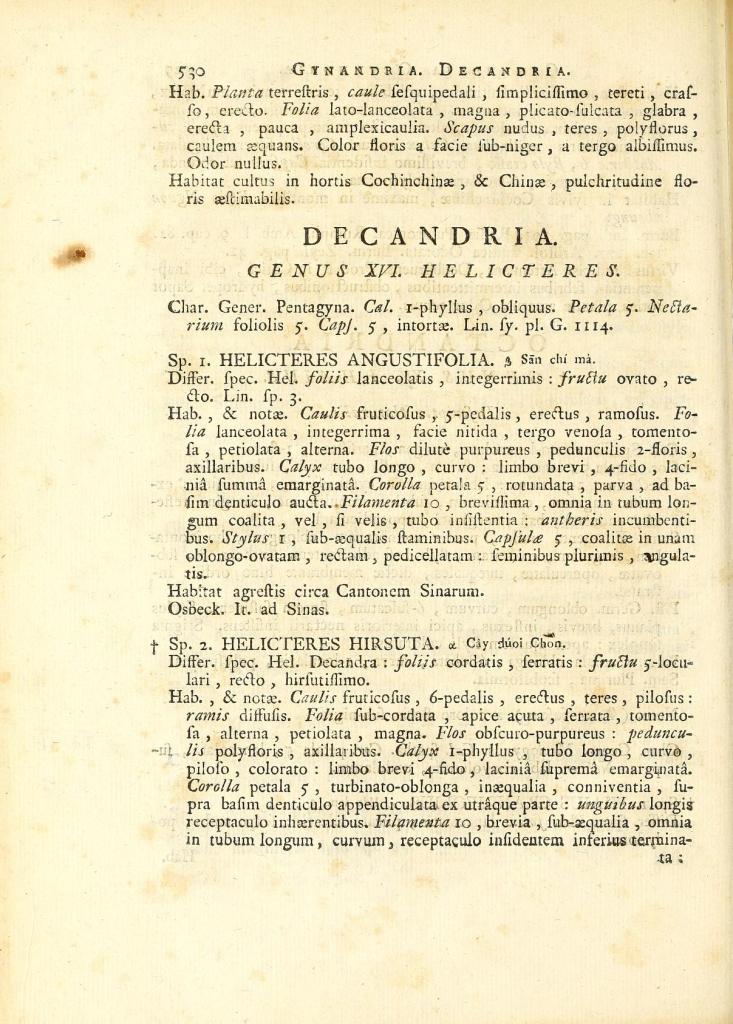
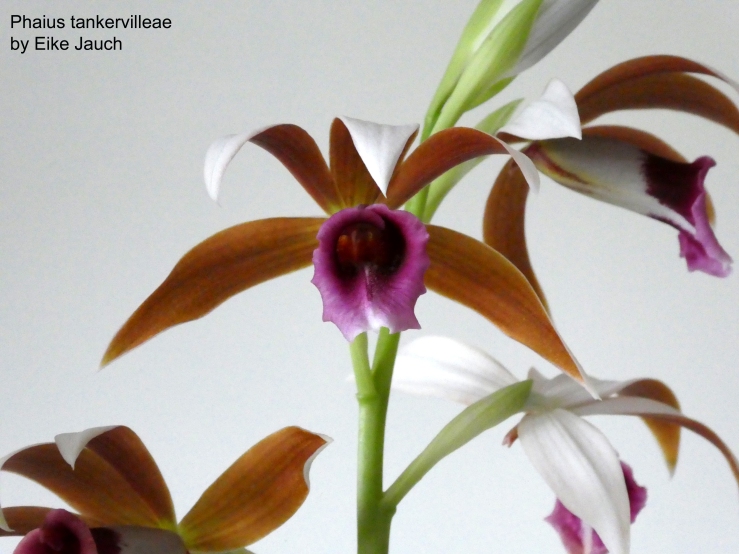
In 1807, Peerson introduced in his Synopsis Plantarum the name Limodorum Incarvillei to honour Father Pierre Nicolas Le Chéron d’Incarville, a French Jesuit and amateur botanist.
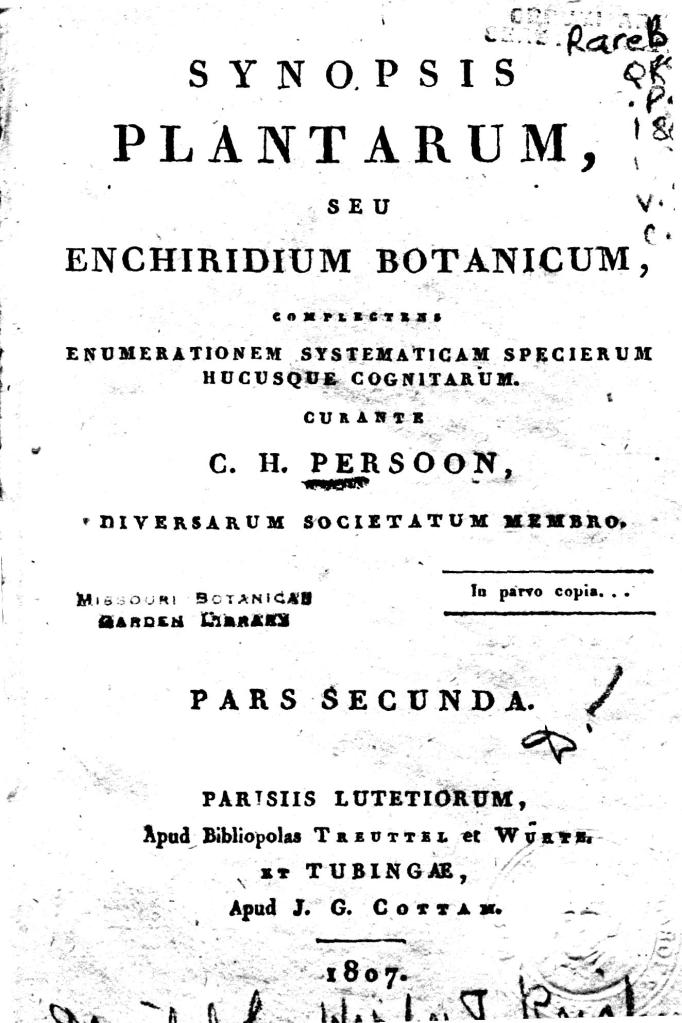
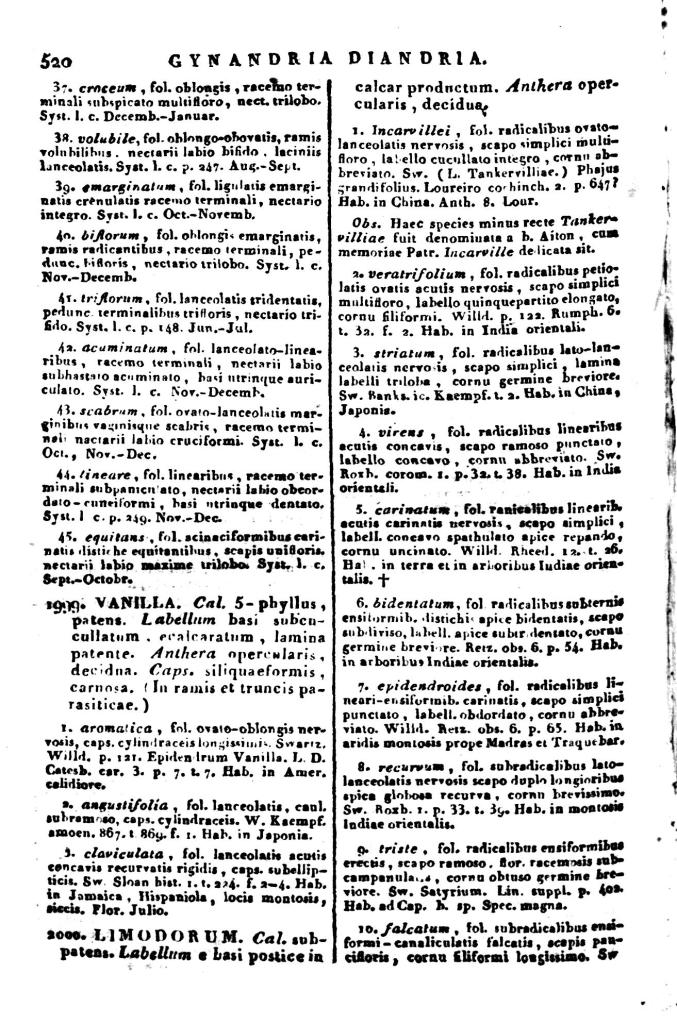
In 1812 Richard Anthony Salisbury used in Transactions of the Horticultural Society the name Pachyne Spectabilis when he wrote about the historical background of Phaius tankervilleae.
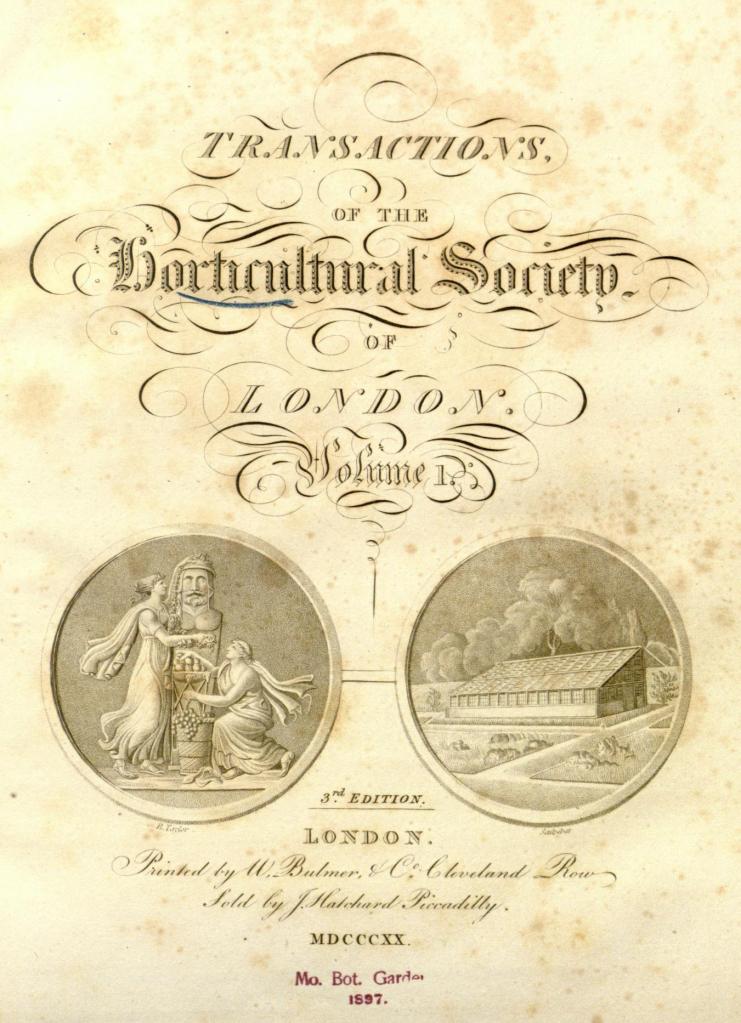
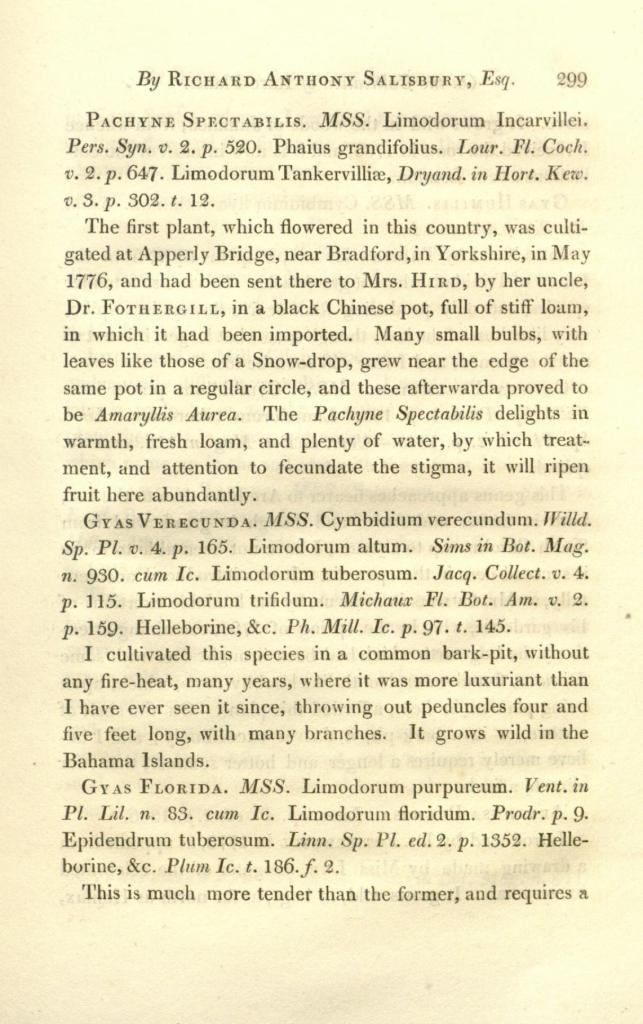
In 1917 Phaius tankervilleae was published as Bletia Tankervilliae in Curti’s Botanical Magazine. This artice tells part of the story behind this beautyful Phaius.
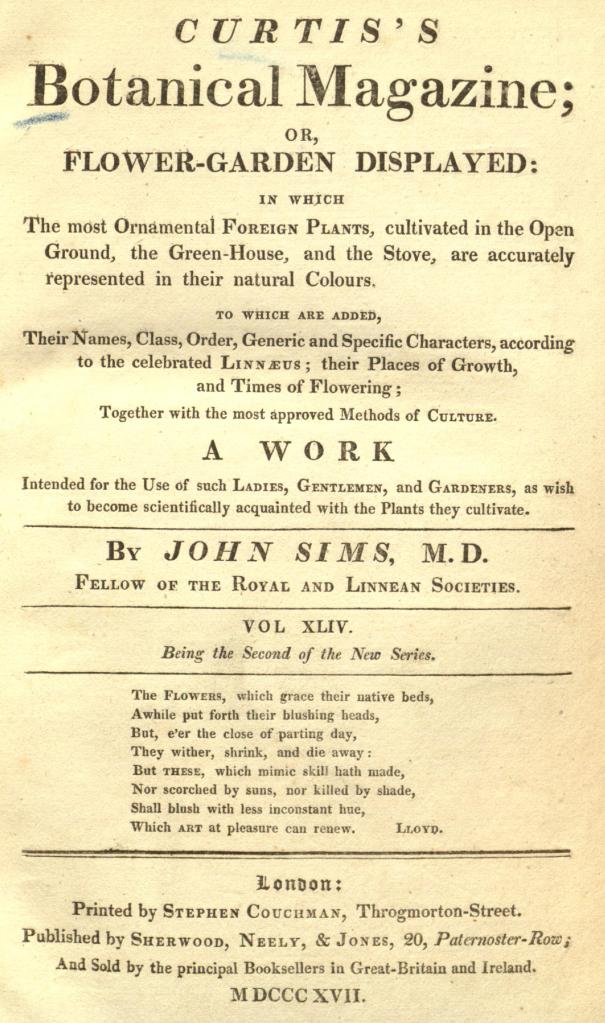
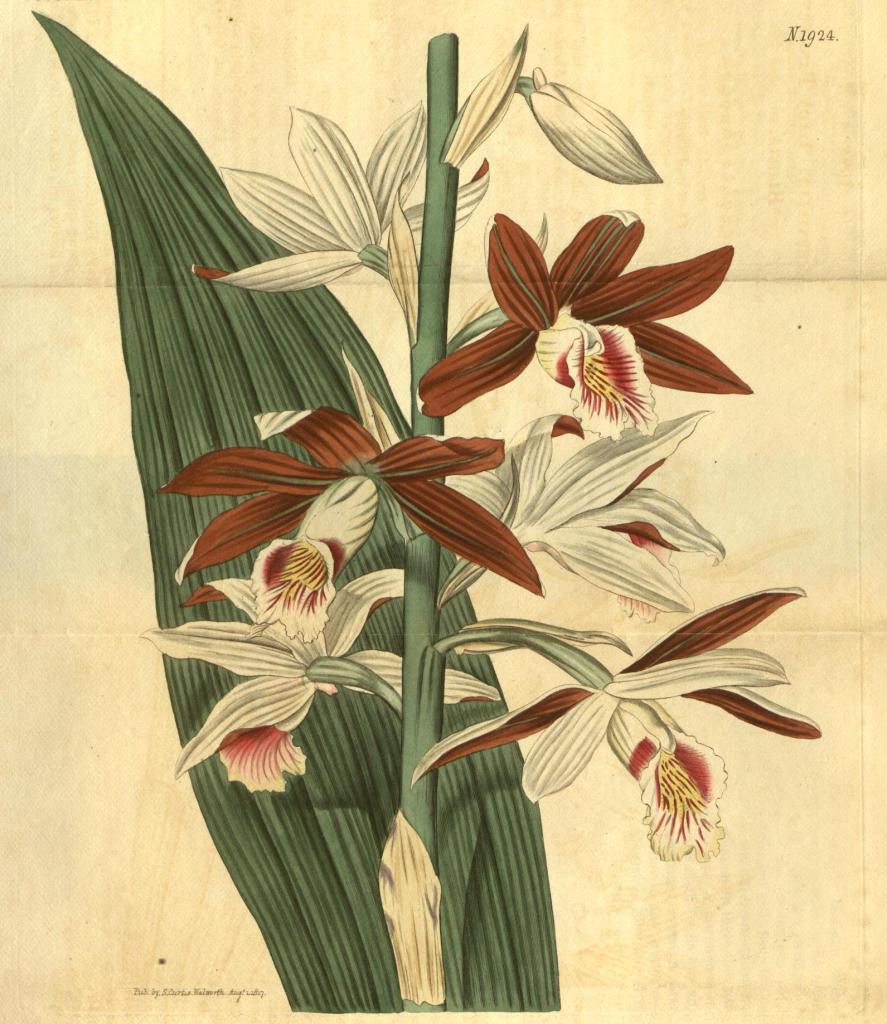
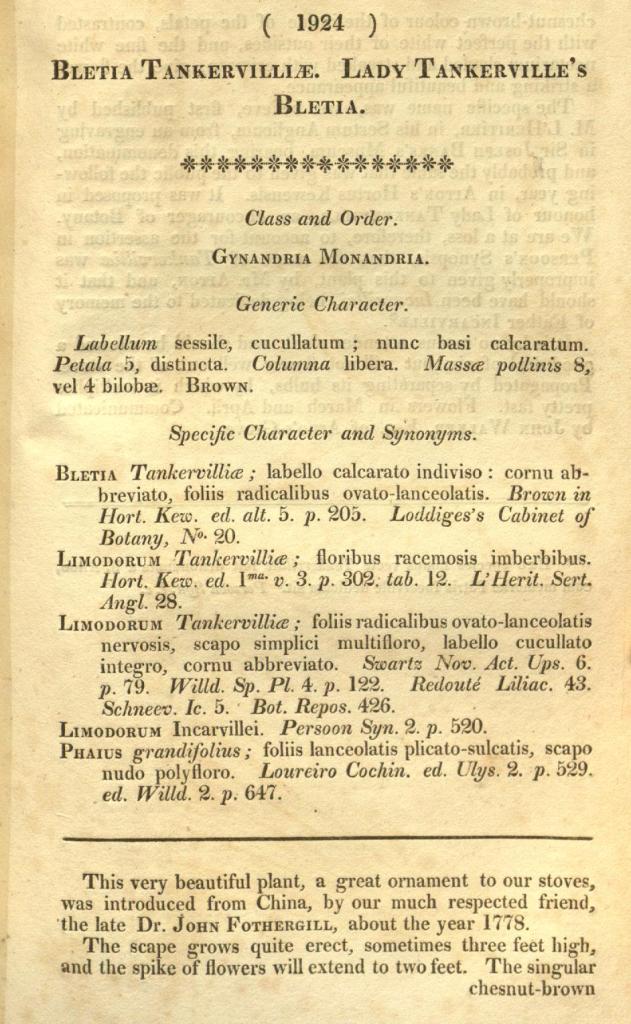
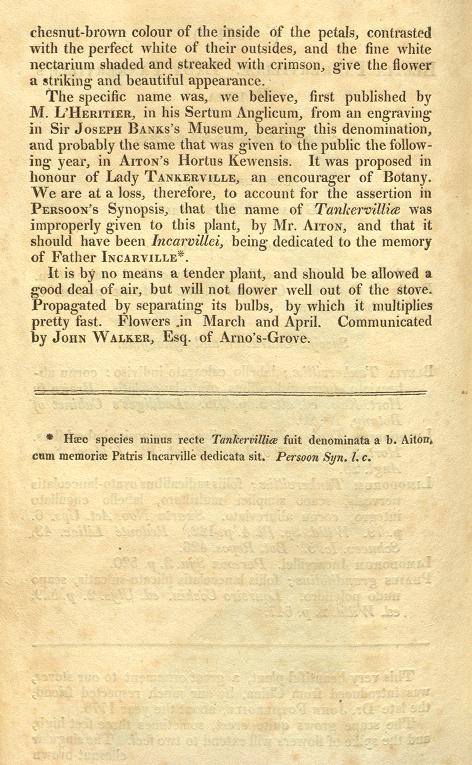
Conrad Loddiges also used 1817 the name Bletia Tankervilliae in his Botanical Cabinet:
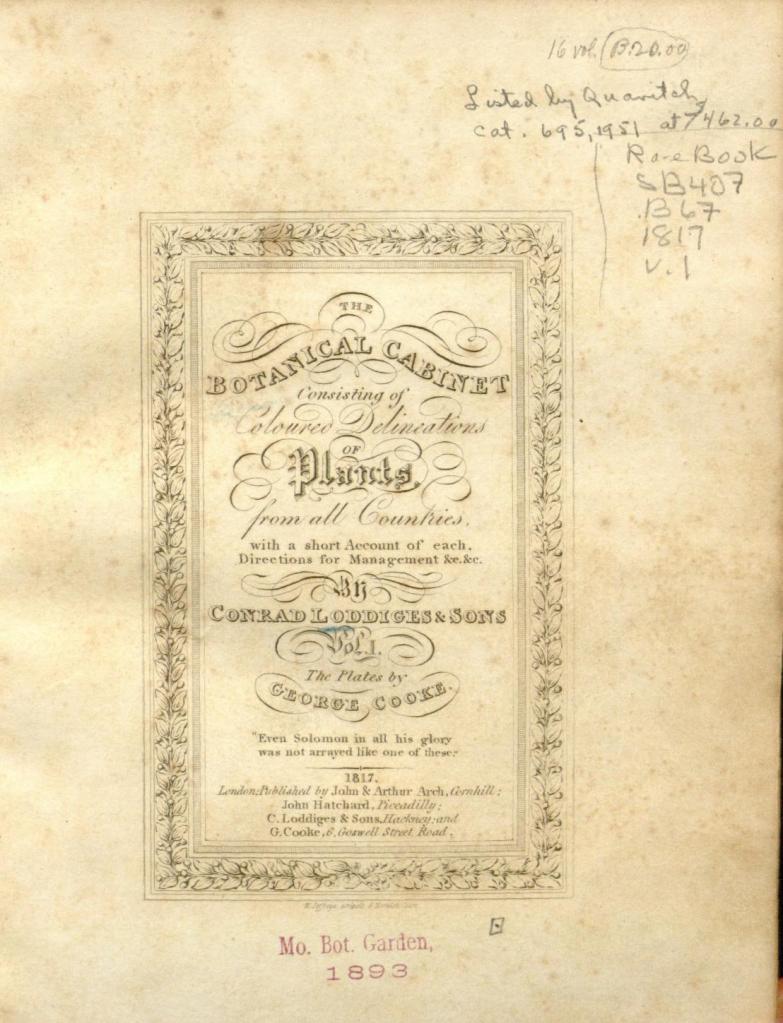
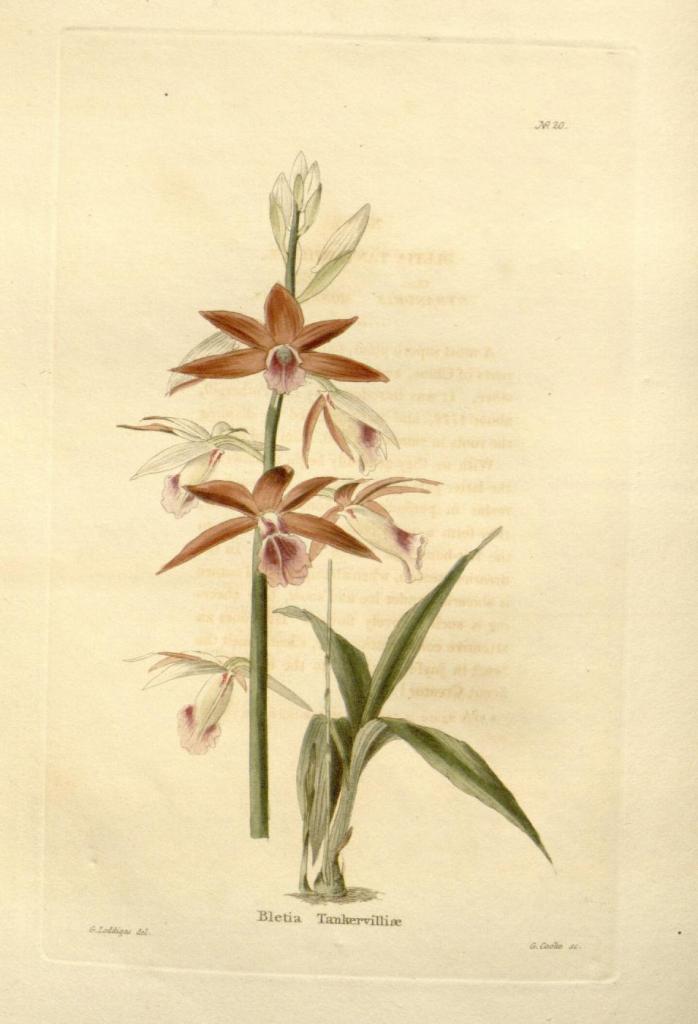
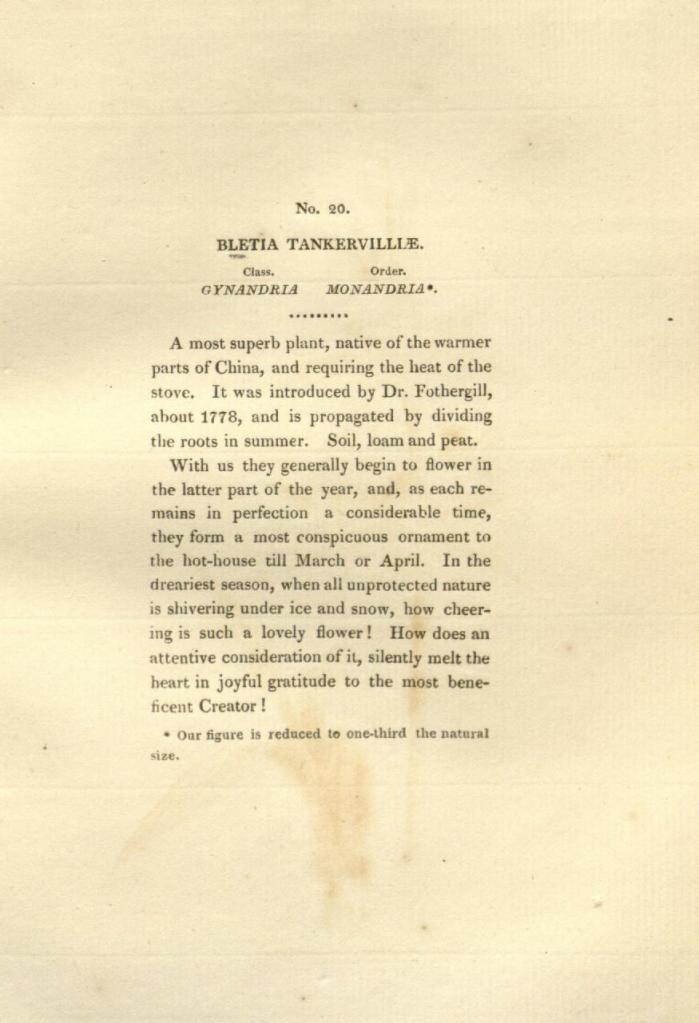
In 1825 Carl Ludwig Ritter von Blume used the name Limodorum Incarvillei in his Bijdragen tot de Flora van Nederlandsch Indië.
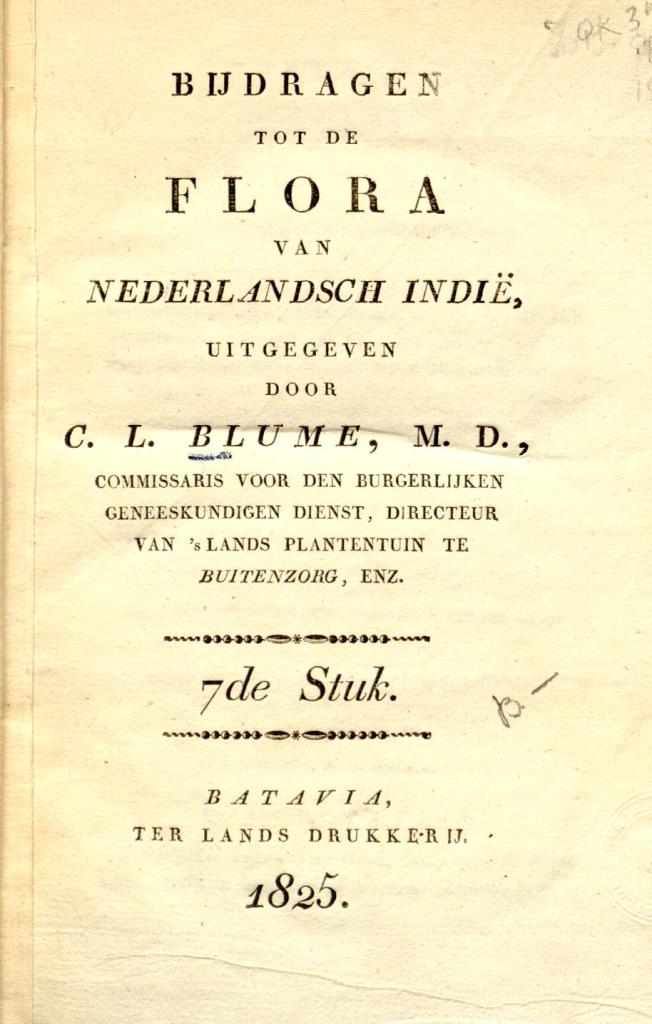
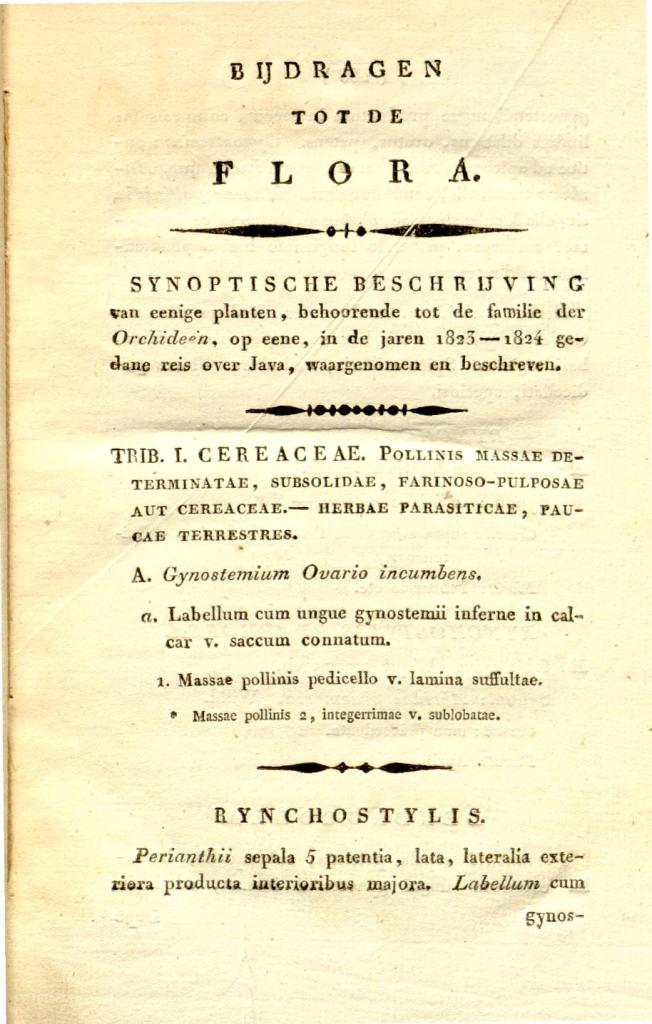
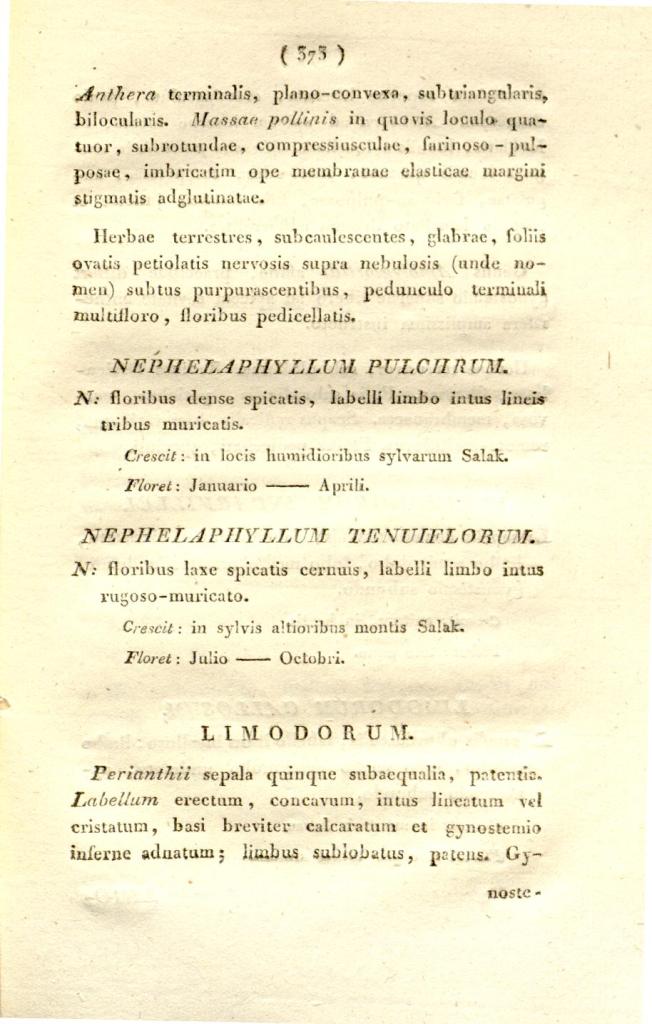
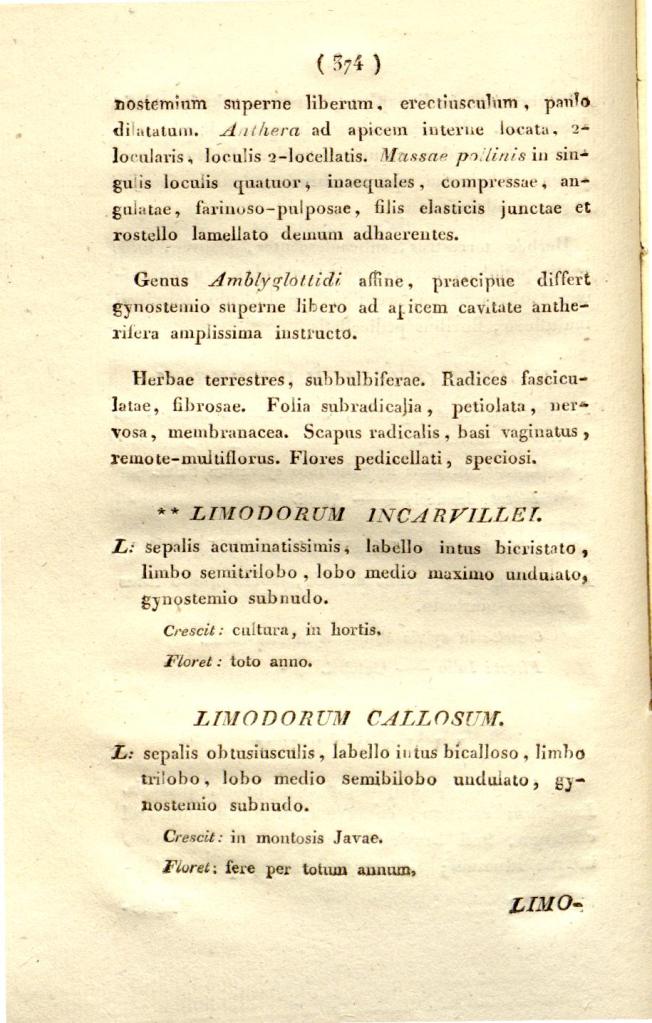
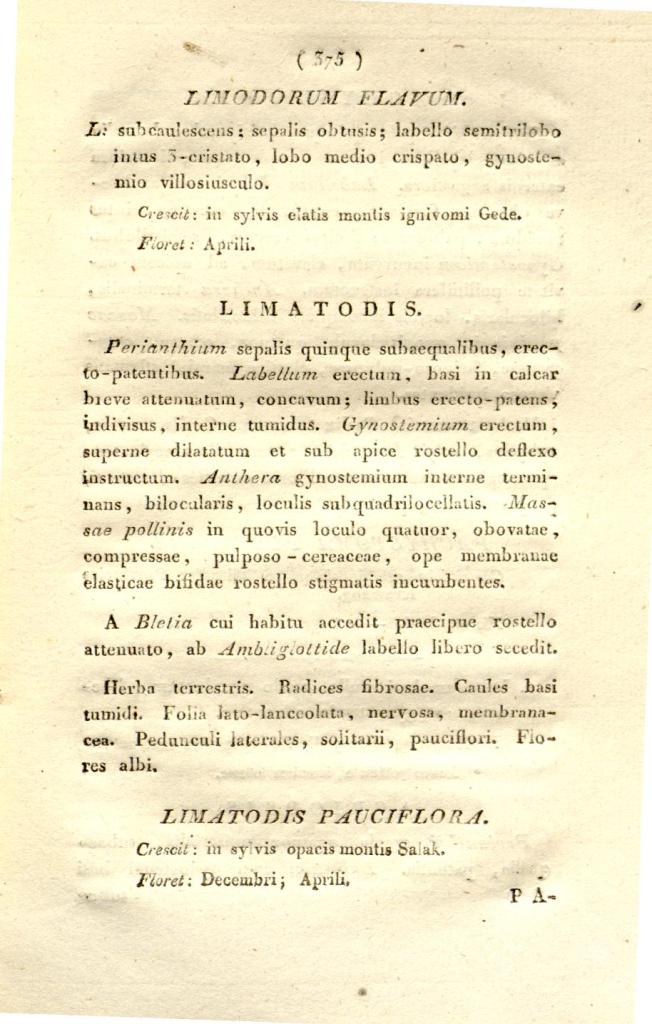
In 1831 John Lindley used the name Phajus grandifolius in his Genera and Species of Orchidaceus Plants:
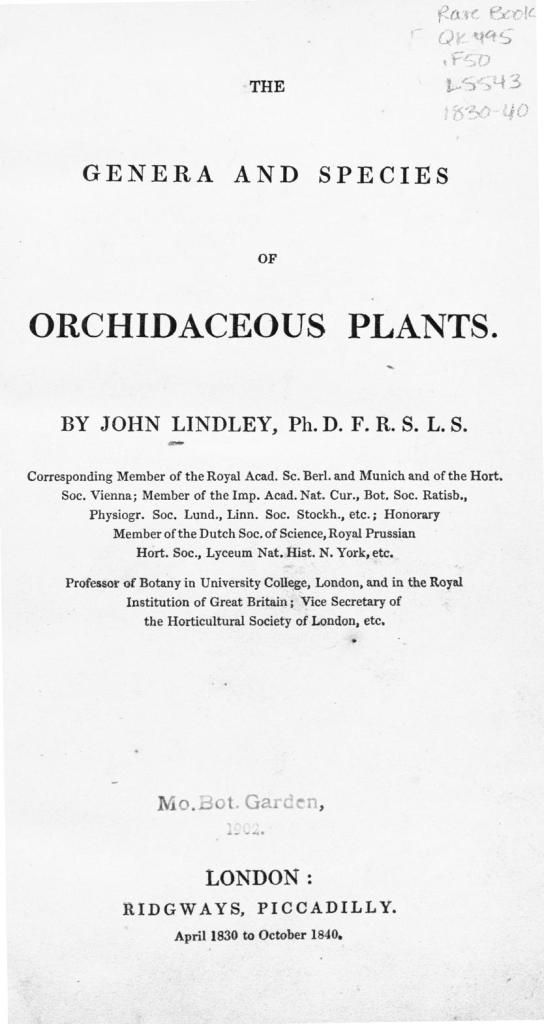
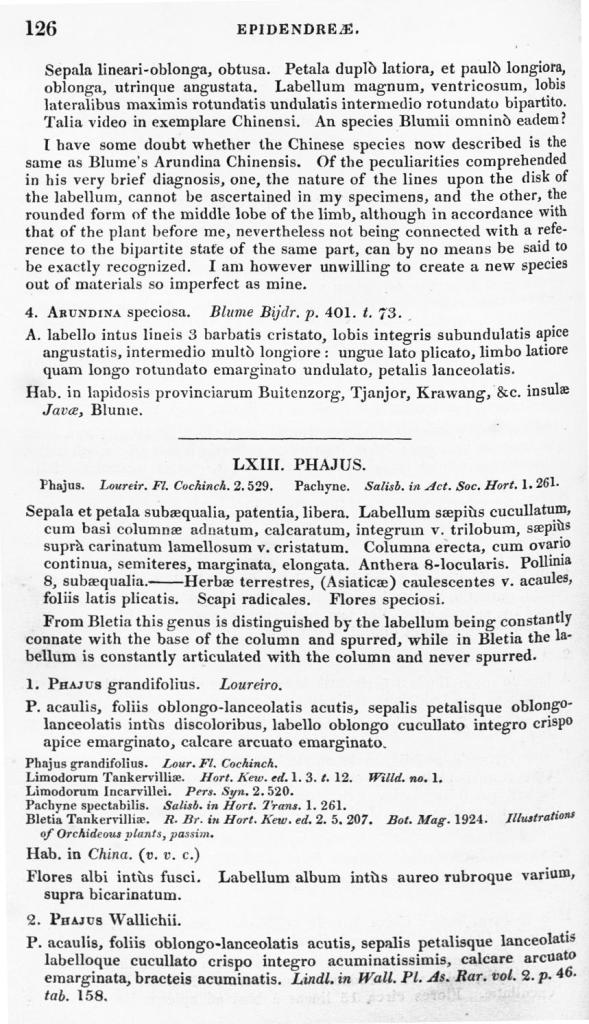

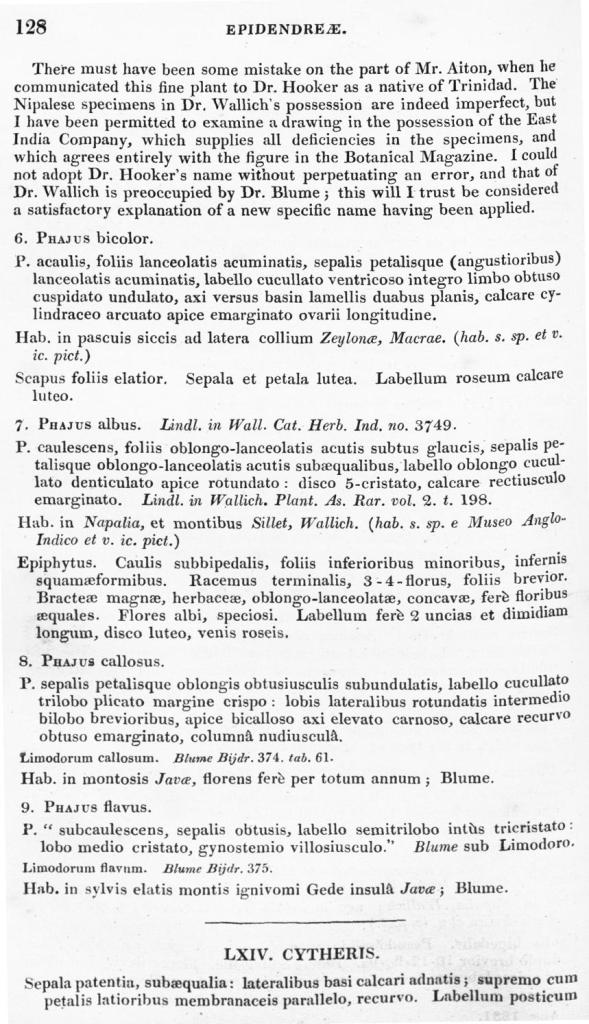
1831 Carl Ludwig Ritter von Blume published in Louis van Houttes Flore des serres et des jardins de l’Europe a drawing of a beautyful Phaius grandiolius he called var superbus:
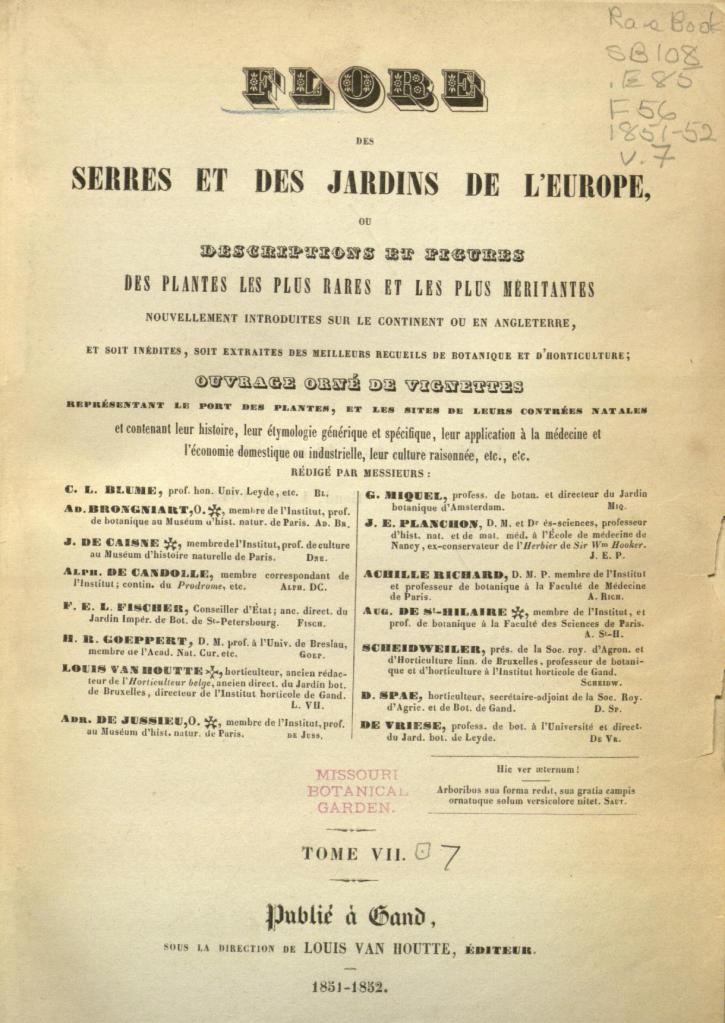
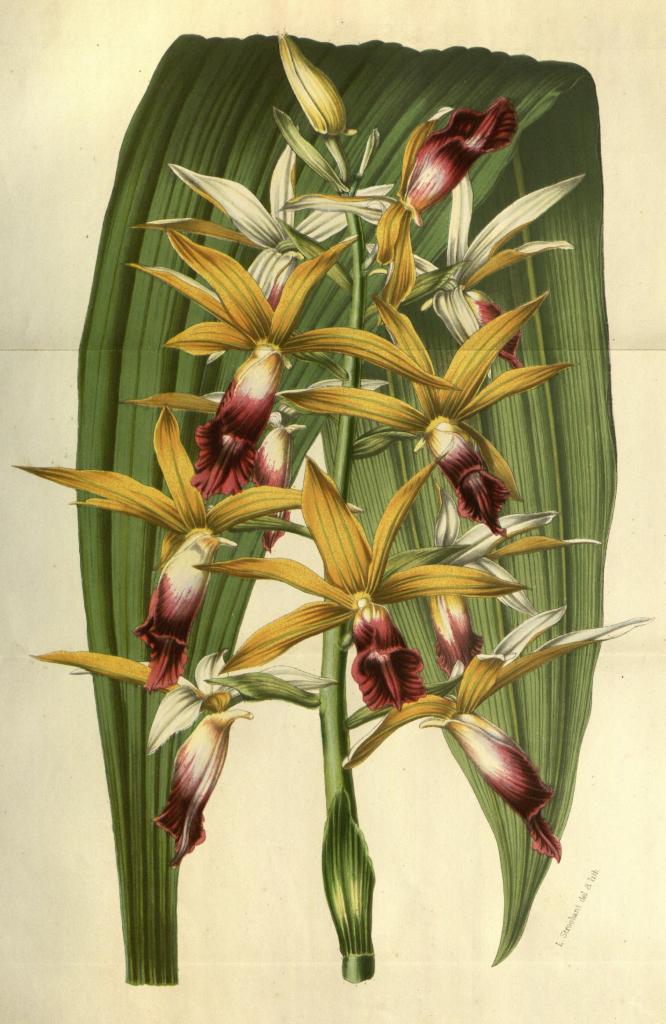
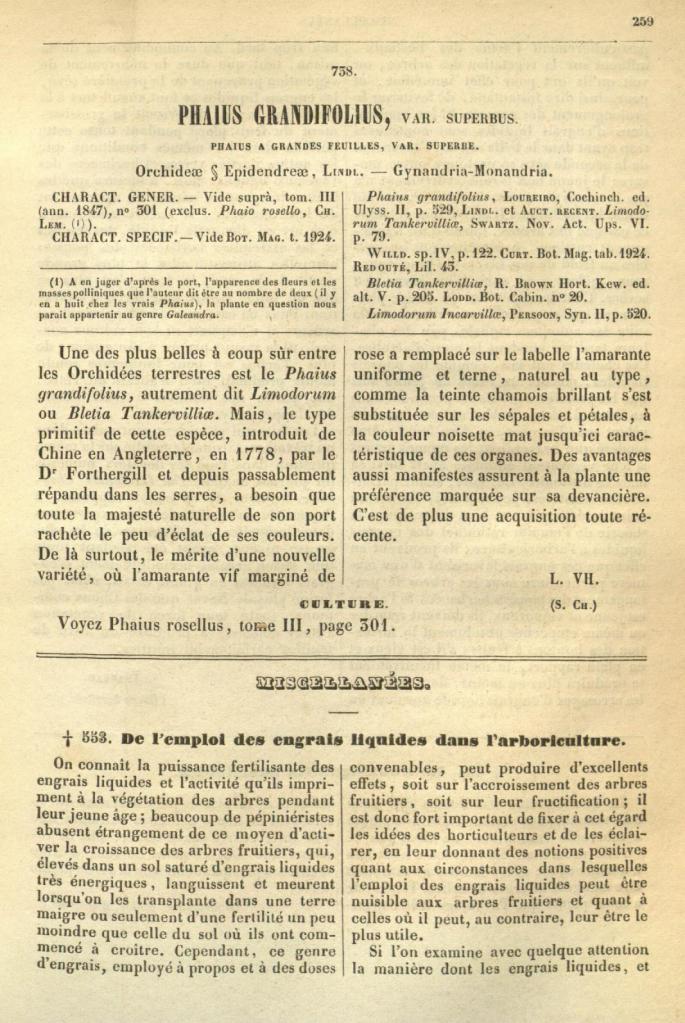
Finally, in 1856, Carl Ludwig Ritter von Blume introduced the name Phajus tankervilii in his Museum botanicum Lugduno-Batavum. He did not yet include Joannis de Loureiros Phajus grandifolius to the new species name. This is most likely due to the original description of Phaius grandifolius: Planta terrestris, caule sesquipedali, simpilcissimo, tereti, crasso, erecto – A terrestrial plant with a stem a foot and a half long, very simple, smooth, thick, upright. However, today it is accepted that Phaius tankervilleae and Phaius grandifolius represent the same species.
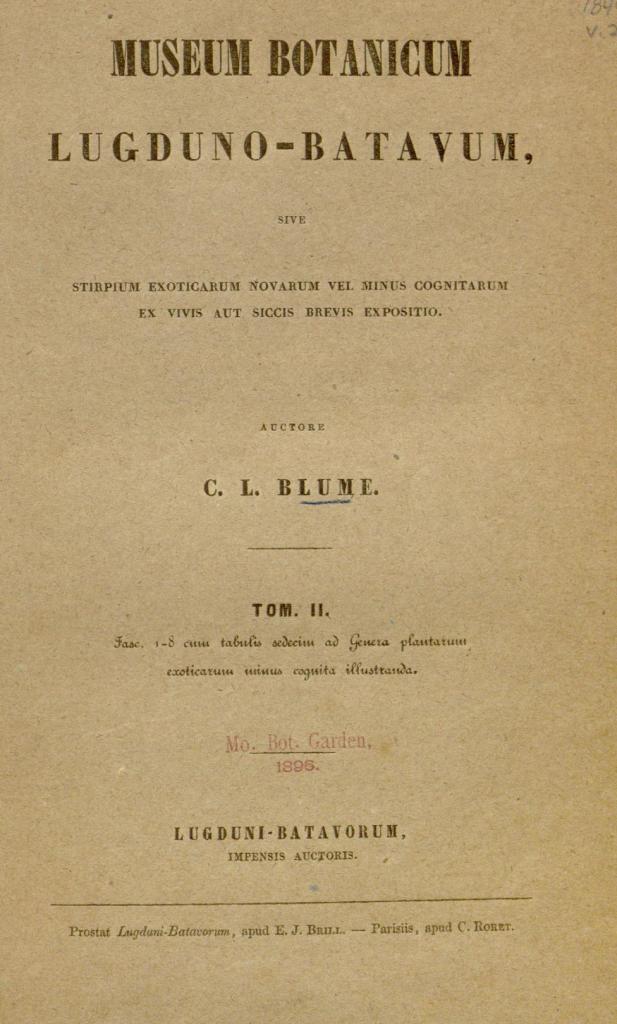
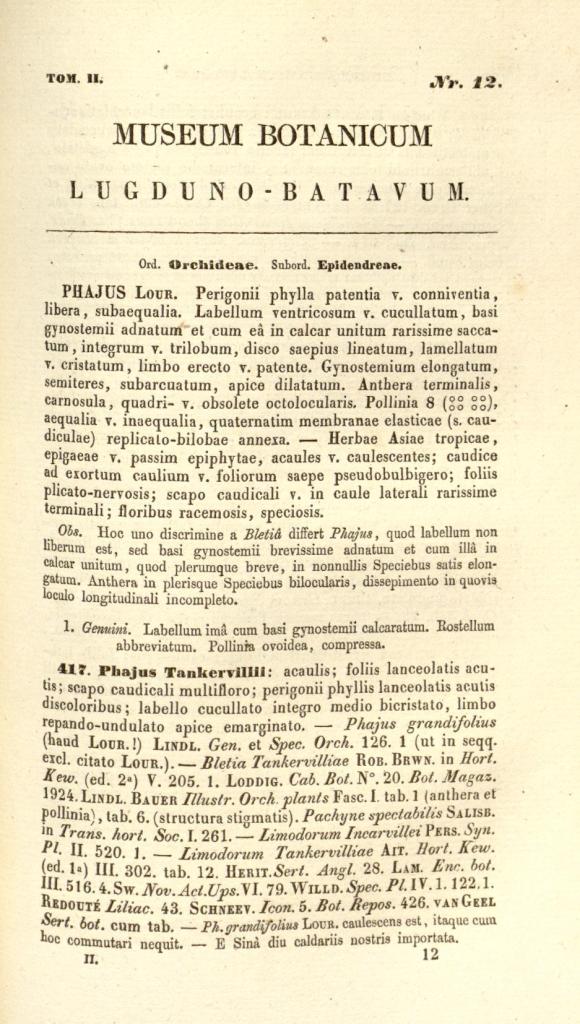
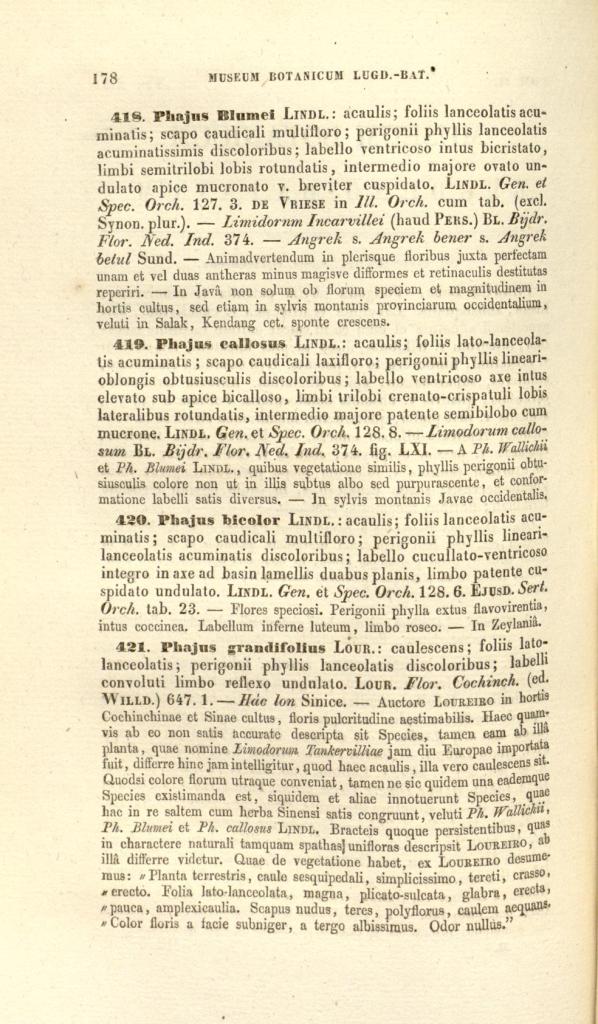
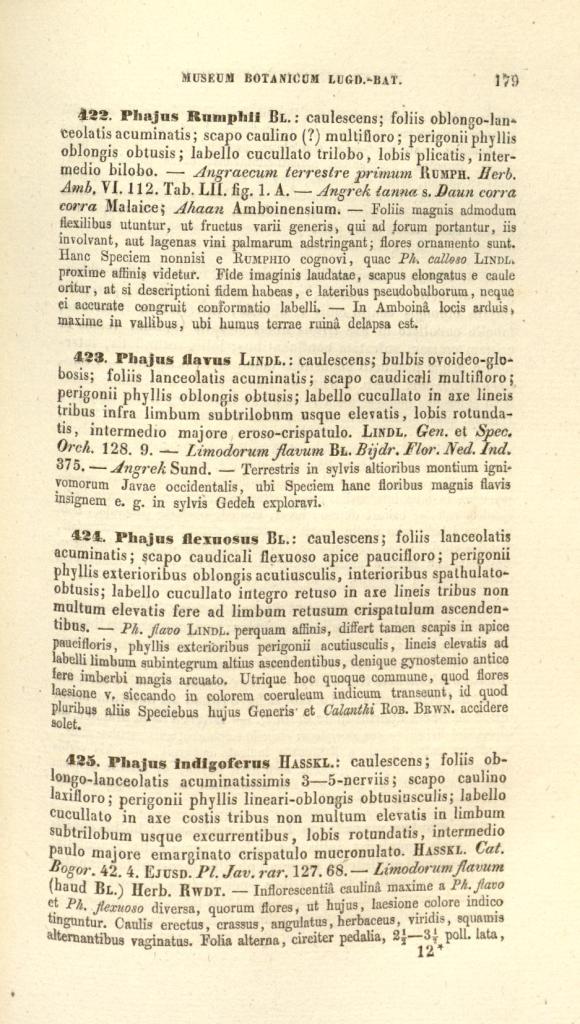
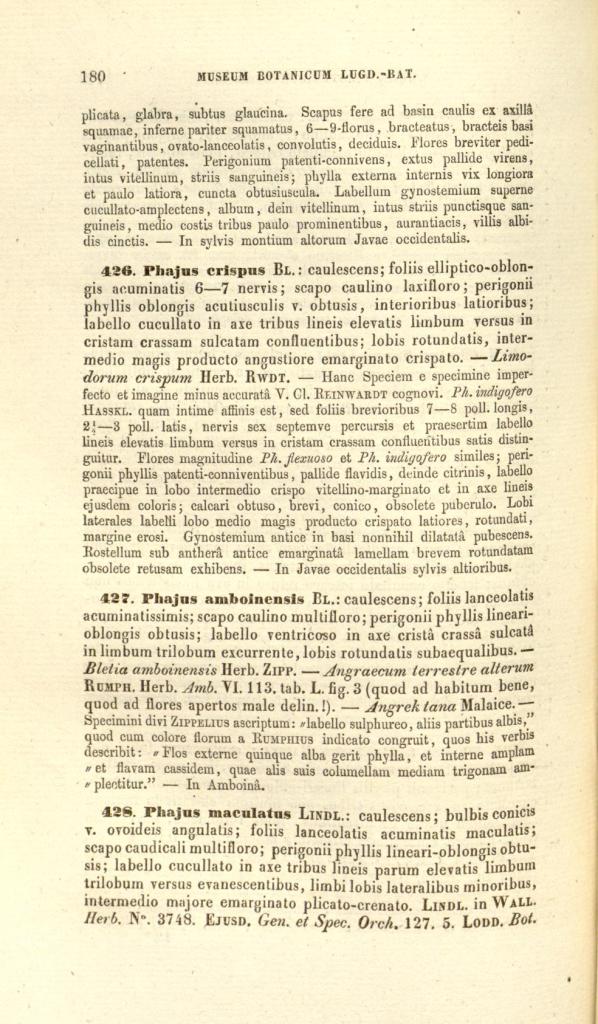
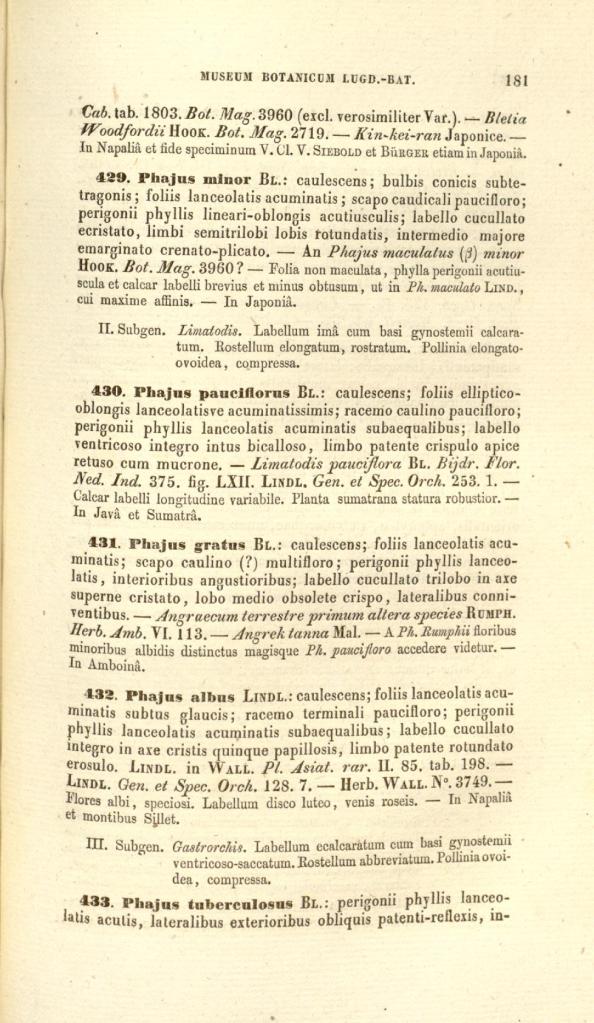
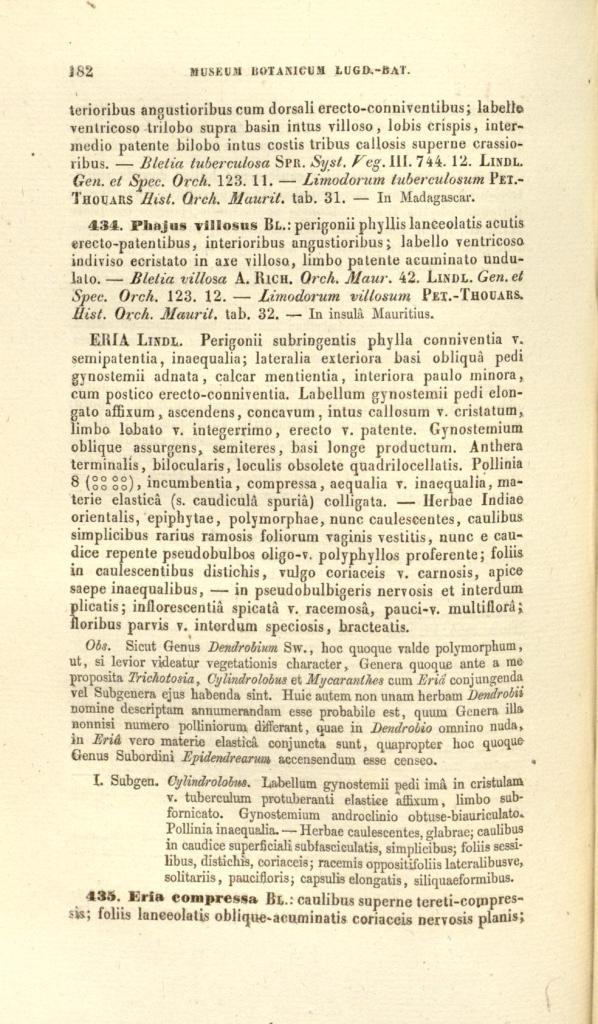
Many of the Phaius I show in this blog are plants that I take care of myself. With Phaius indochinensis it is quite different. It is not available in Europe and therefore I could not show pictures of this amazing Phaius that I took myself.
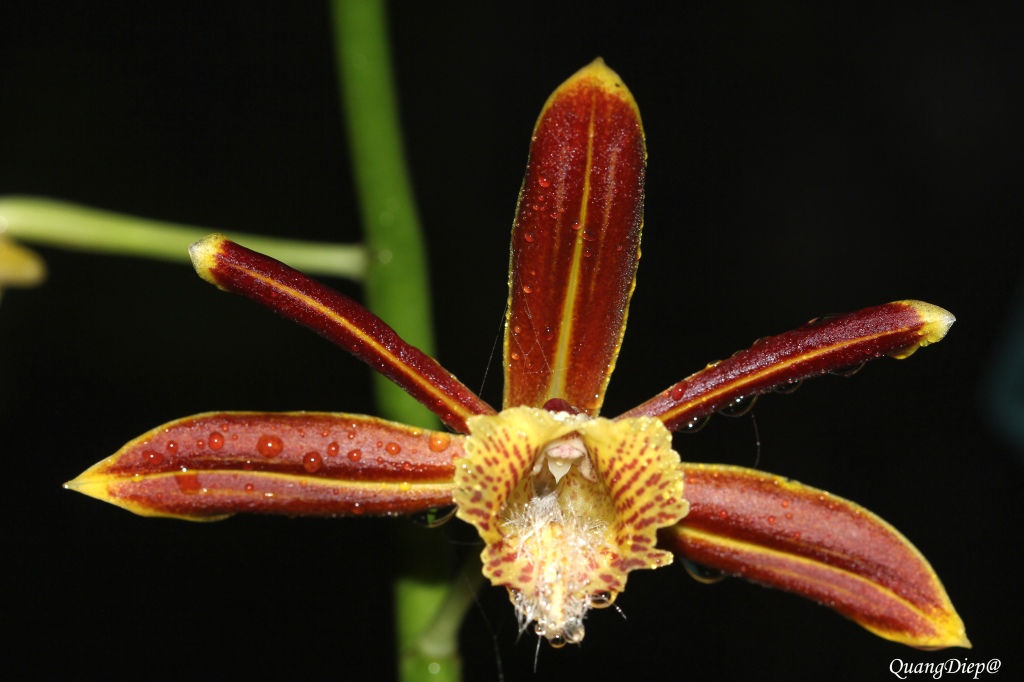
Some days ago I was lucky to make contact with Dr. Diep Dinh Quang. He works at the Institute of Applied Technology, Thu Dau Mot University, Vietnam and has an eye for the beauty of the genus Phaius. Previously Dr. Diep Dinh Quang worked at the Tay Nguyen University and Nong Lam University in Ho Chi Minh City.
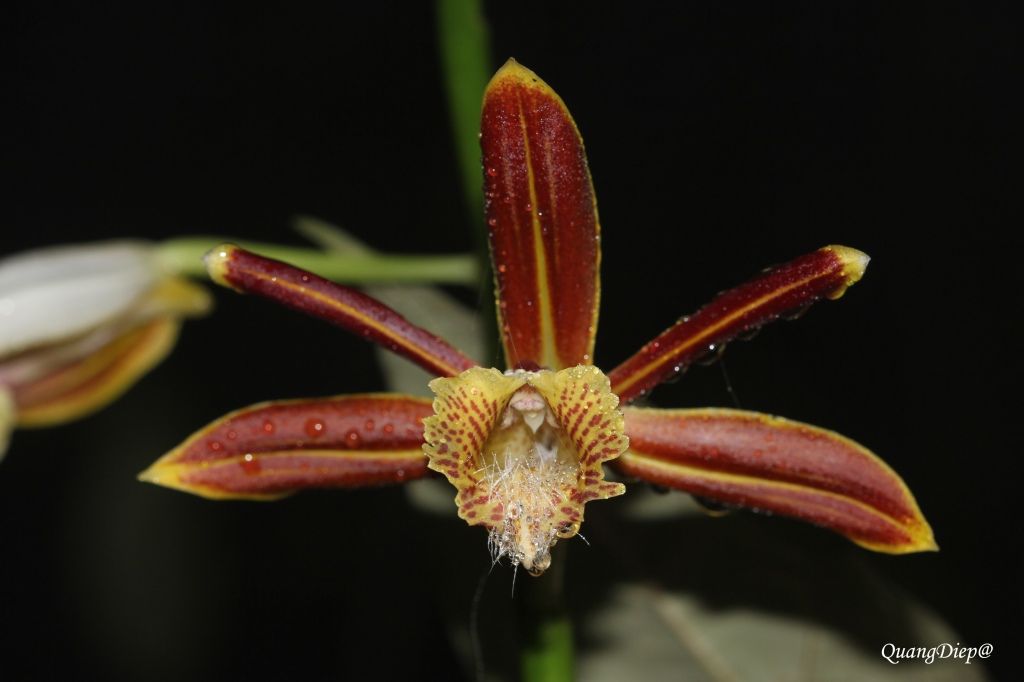
Phaius indochinensis belongs to the section Limatodes. These Phaius have elongated stems. According to literature Phaius indochinensis grows up to 70cm and prefers shady humid places close to water and intermediate temperatures. It does not like higher temperaturs.
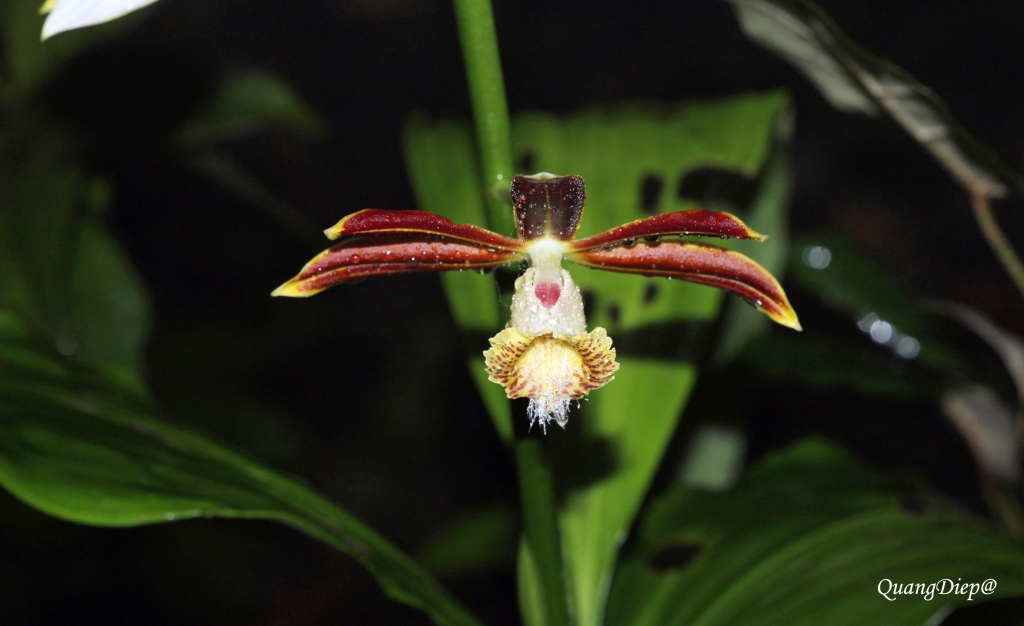
Phaius indochinensis flowers from September to November
The flowers of Phaius indochinensis are striking. The mid-lobe of the lip shows many long white hairs. The side-lobes of the lip spread and face foward, making the flower quite showy.
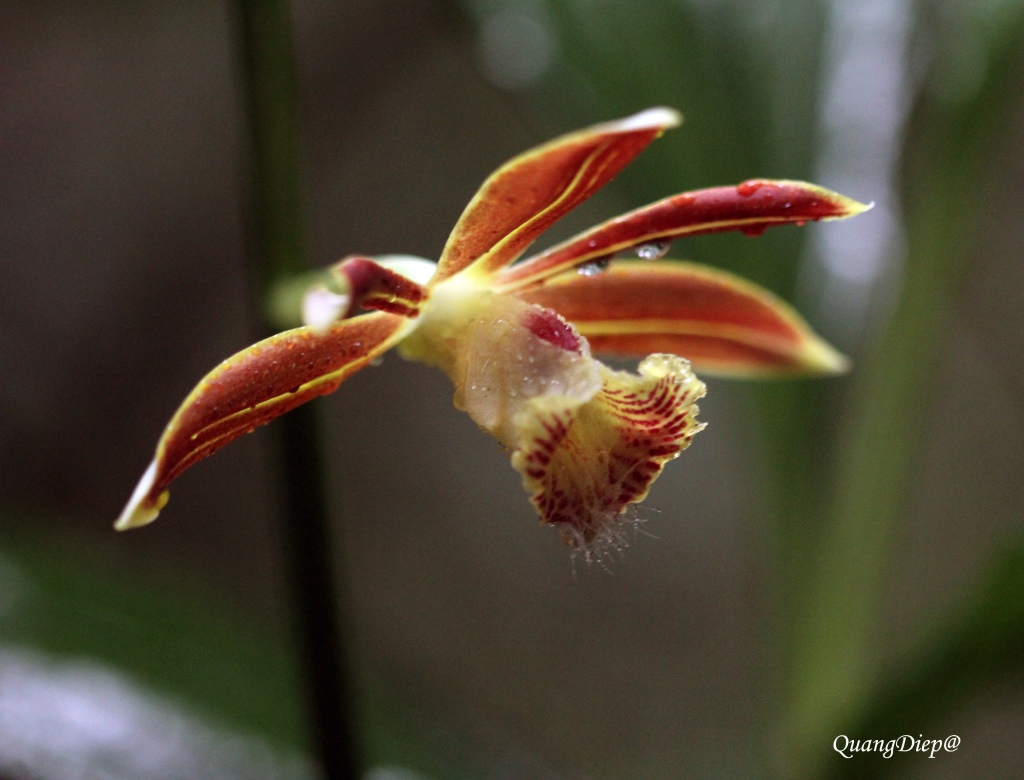
It is not known which insects pollinate Phaius indochinensis. For other Phaius it was reported that carpenter bees transfer the pollen from one flower to the other. Phaius indochinensis is distributed in Indo-China and is found in Vietnam and eastern Thailand.
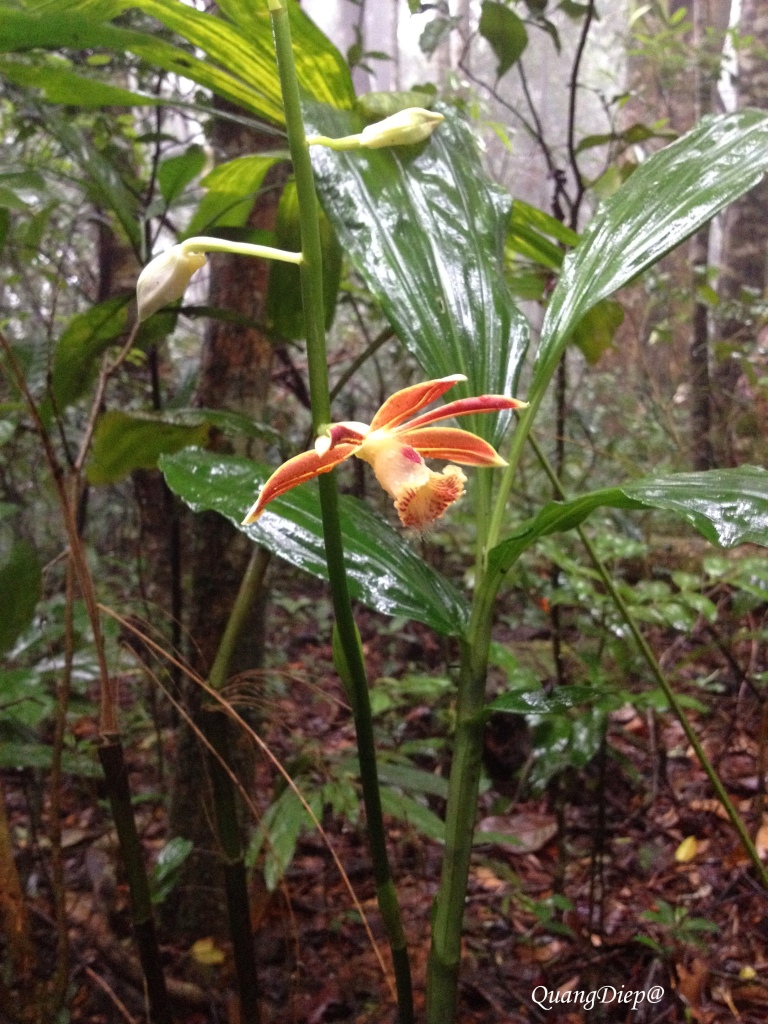
Phaius indochinensis was first described in 1995 by Seidenfaden and Ormerod (Opera Bot. 124: 17). Incredible that such a beauty remained undescribed for such a long time. In Vietnam Phaius indochinensis can be found in Lam Dong at an altitude of about 1000 meter.
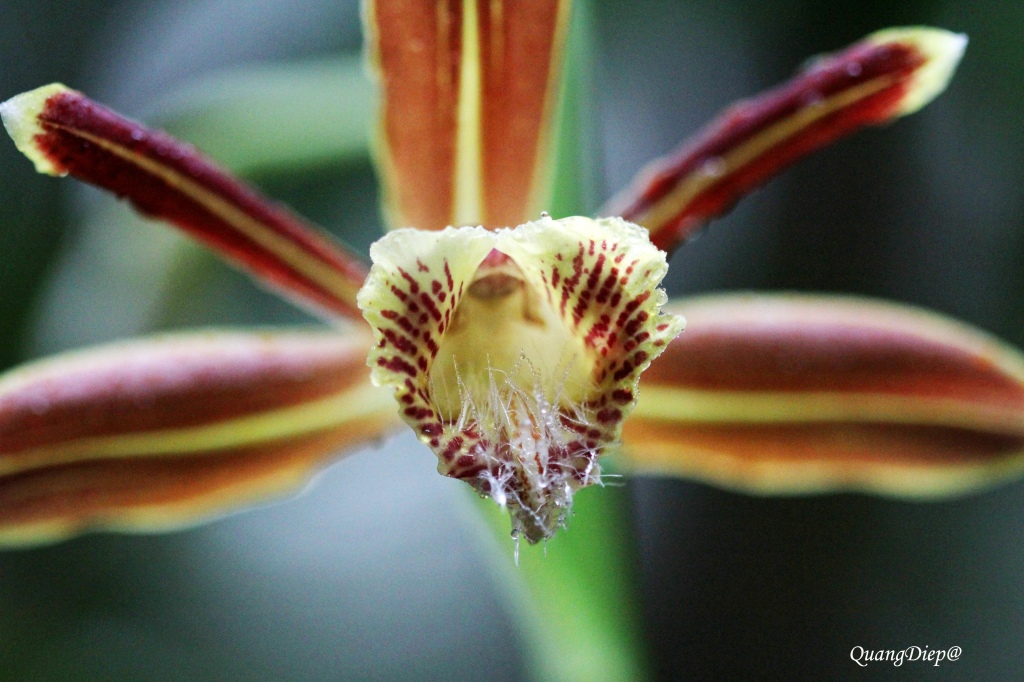
Dr. Diep Dinh Quang took all pictures in situ. I would like to say thank you for his kindness.
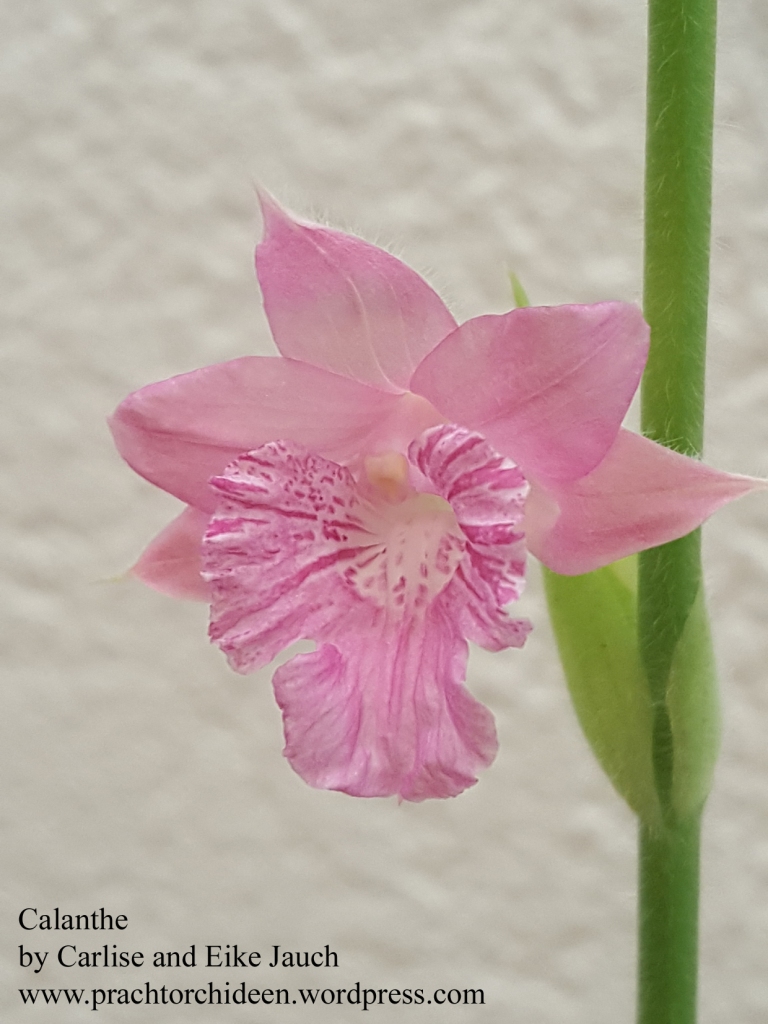
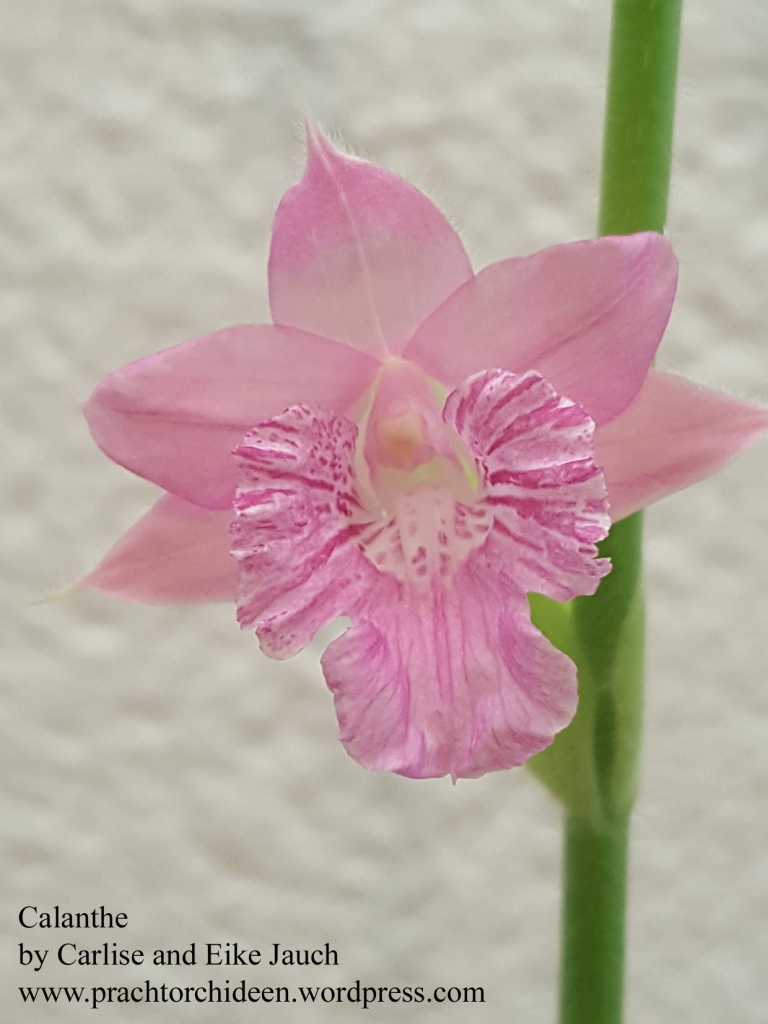
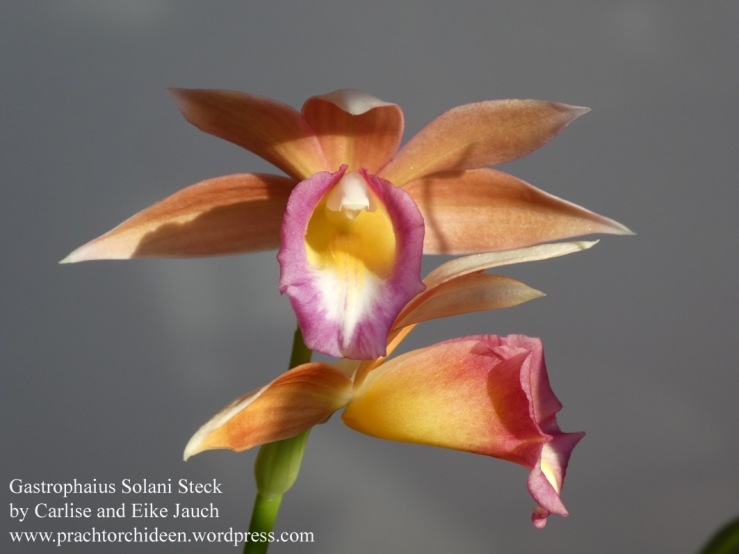
A particularly pretty Gastrophaius
Four years ago we started this blog to give a platform to Phaius, Gastrorchis and Calanthe orchids. We showed many species that we collected and made pictures of hybrids that we successfully generated. 2021 more and more of our hybrids flowered for the first time, thereby teaching us quite a bit about inheritance of certain traits.
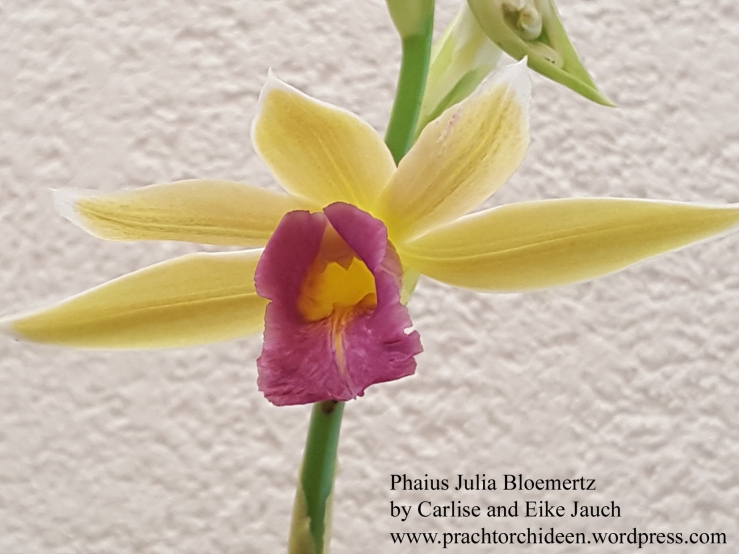
The more hybrids we see flowering the more we get convinced that it is worth to work with these ground orchids in future. We need to reduce plant size and increase flower size to make the hybrids attractive for the window sill.

Will it be possible to create a pure white Phaius hybrid? And will the breeding of Gastrophaiante be a feasable aim?
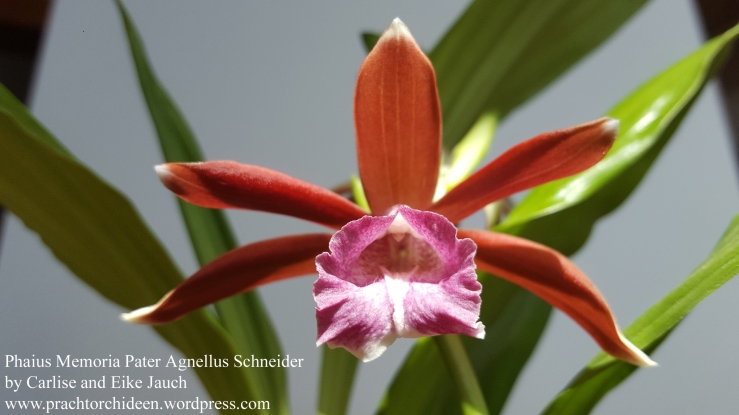
How will we succeed do get more flower spikes per plant? And which parental plants have to be used to improve colouration of the blooms? Difficult tasks lie ahead of us!
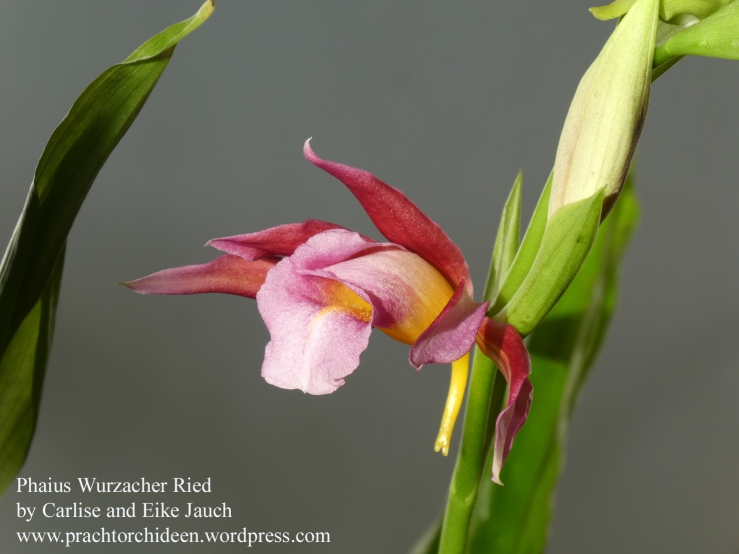
We look to the year 2022 full of hope. Thanks to everyone who has accompanied us on our orchid path.
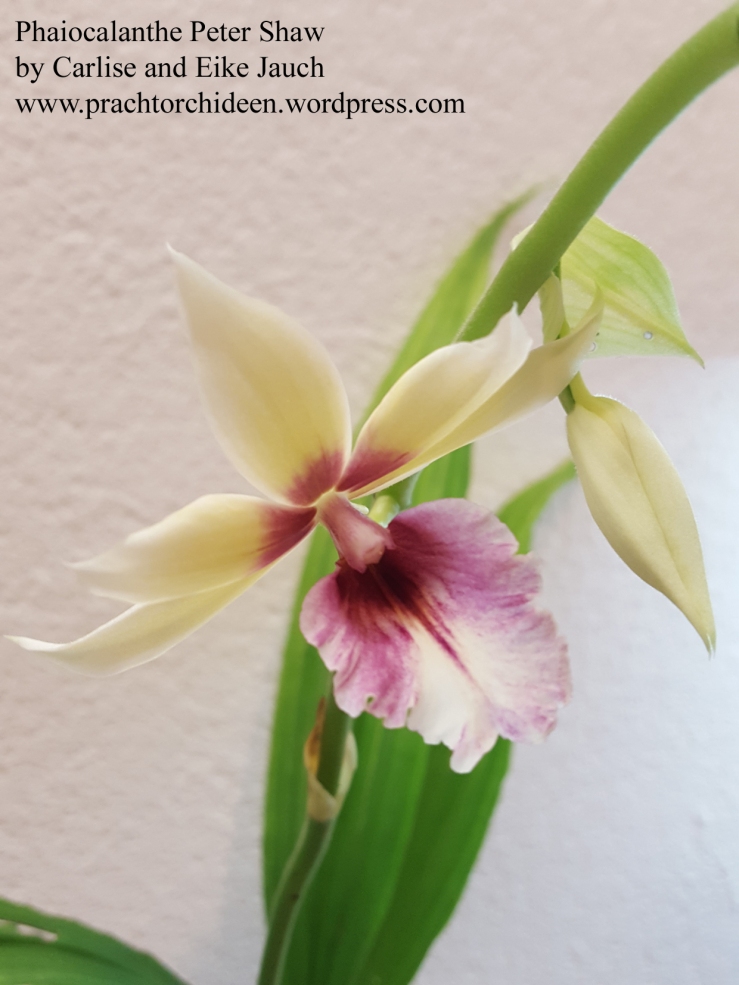

Phaius Julia Bloemertz is another combination of a Phaius section Limatodes and a Phaius section Phaius. We registered this hybrid in 2019 and are happy about the Christmas present we got today: The first open flower of this beauty!
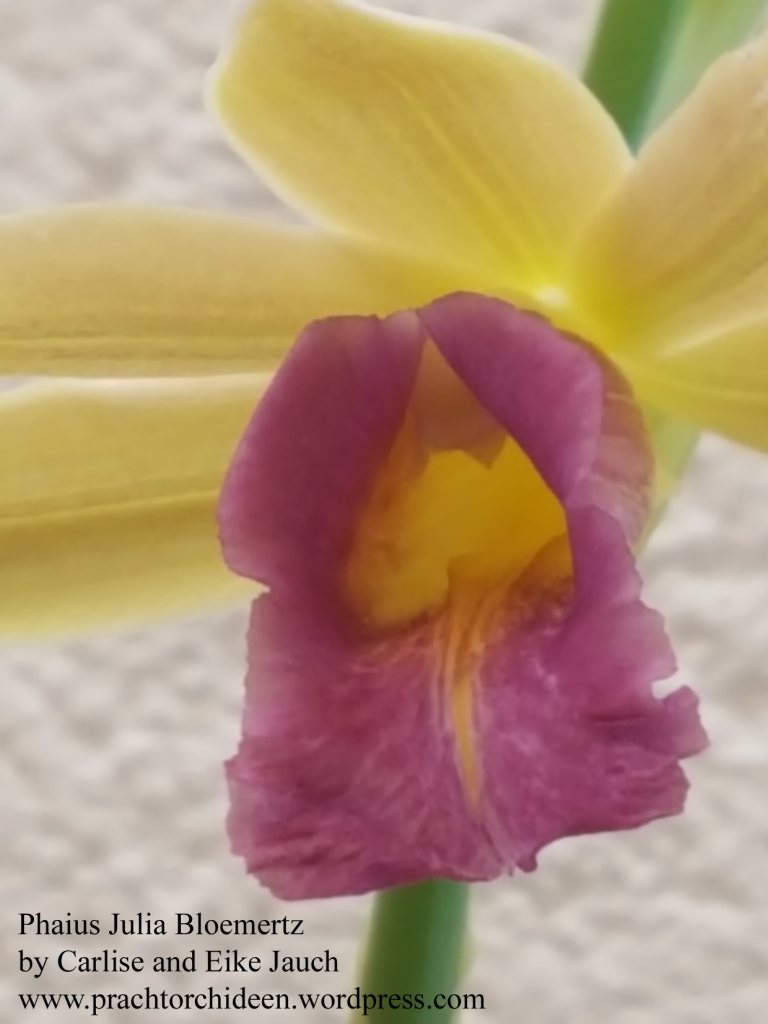
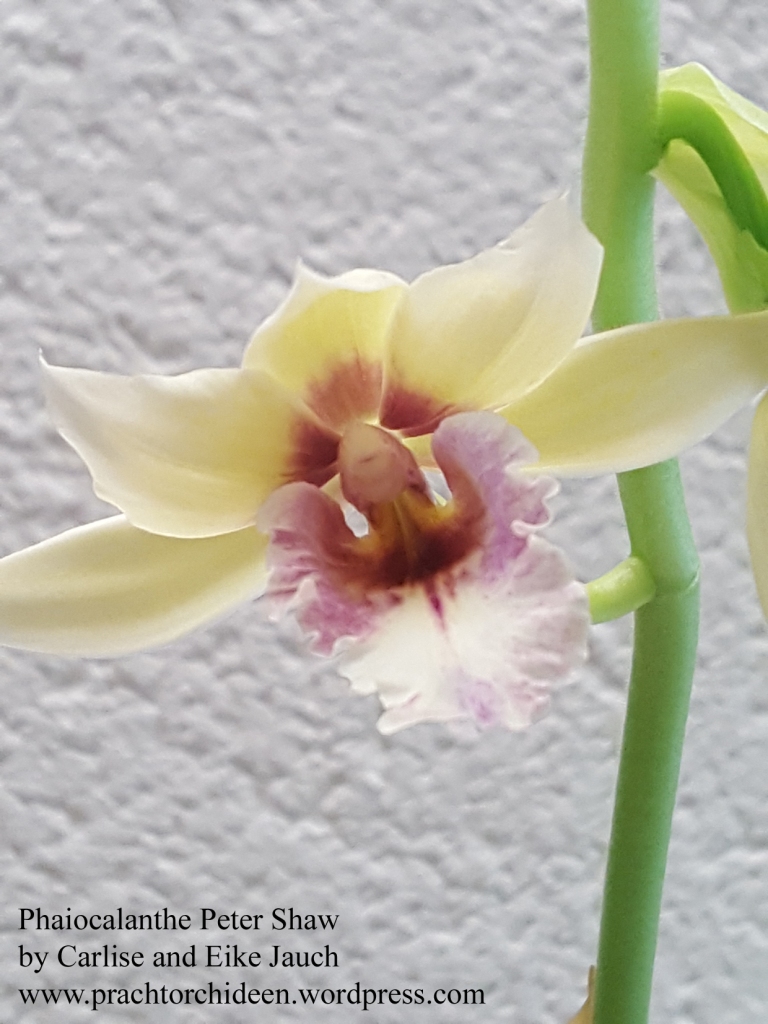
For years it was our interest to reproduce some of the known Phaius hybrids, as there often is no picture material that documents the appearance of registered hybrids. One of these hybids is Phaiocalanthe Peter Shaw, Phaius Gravesiae x Calanthe vestita, registered in 1997 by B. Southwood.
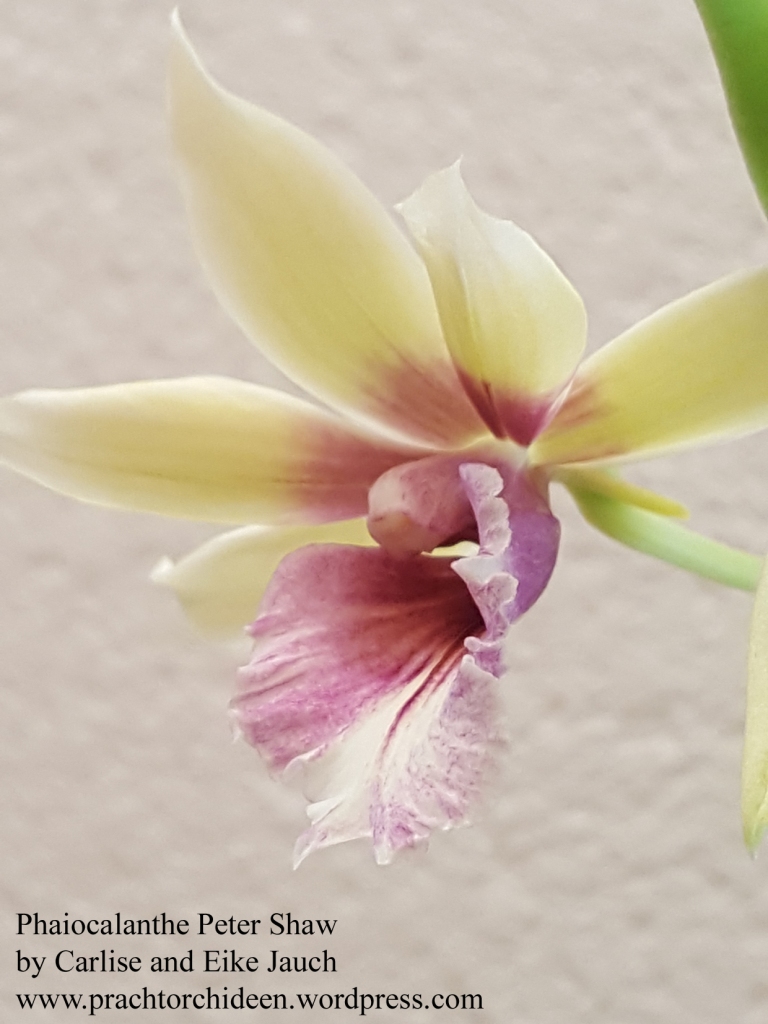
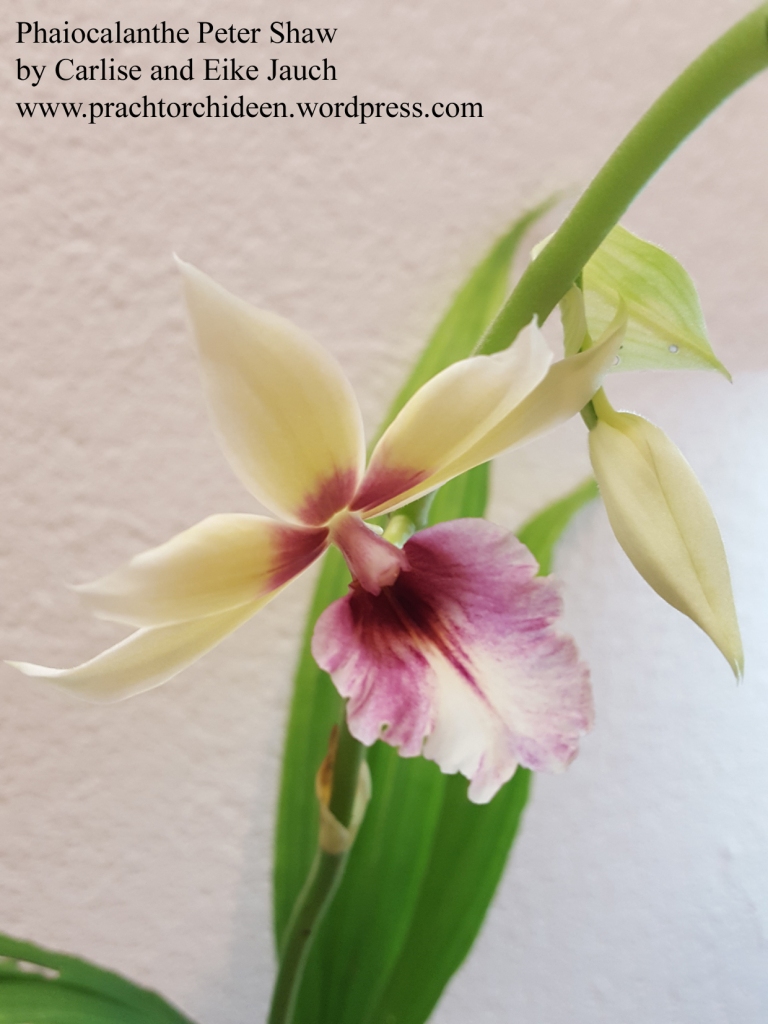
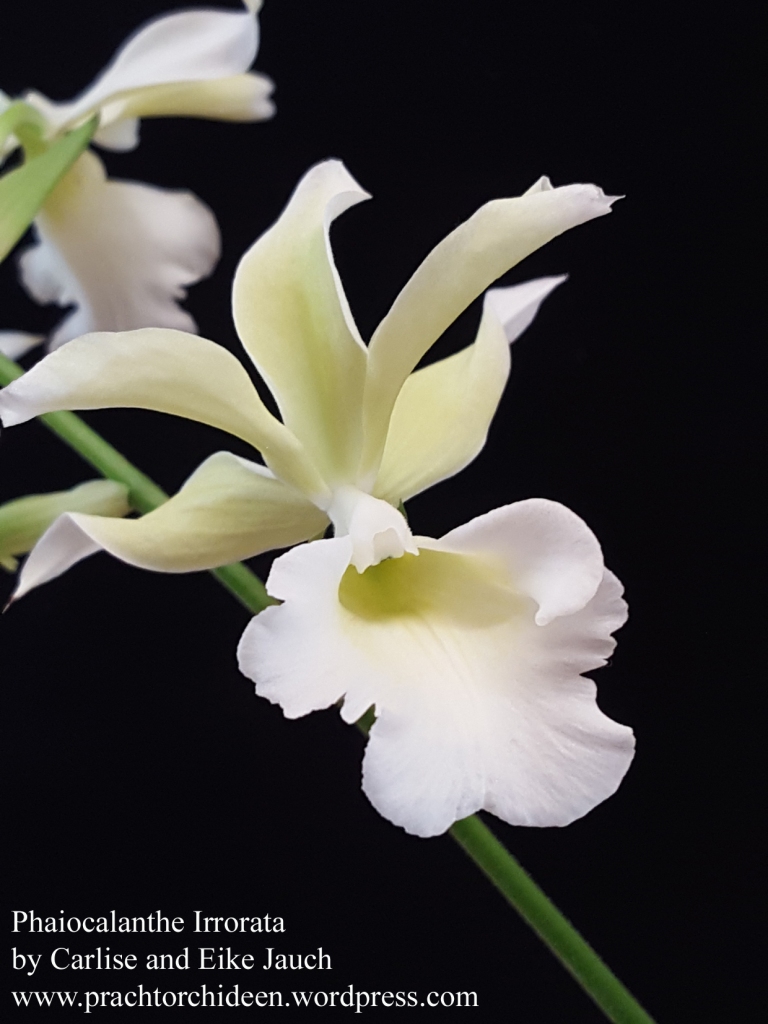
Phaiocalanthe Irrorata was registered in 1867 by Veitch. It was used to produce hybrids like Phaiocalanthe Andromeda, Phaiocalanthe Pi-Jing Beauty, Phaiocalanthe Pleiades and Phaiocalanthe Southside. It is not too big in size and can be easily grown on the window sill.
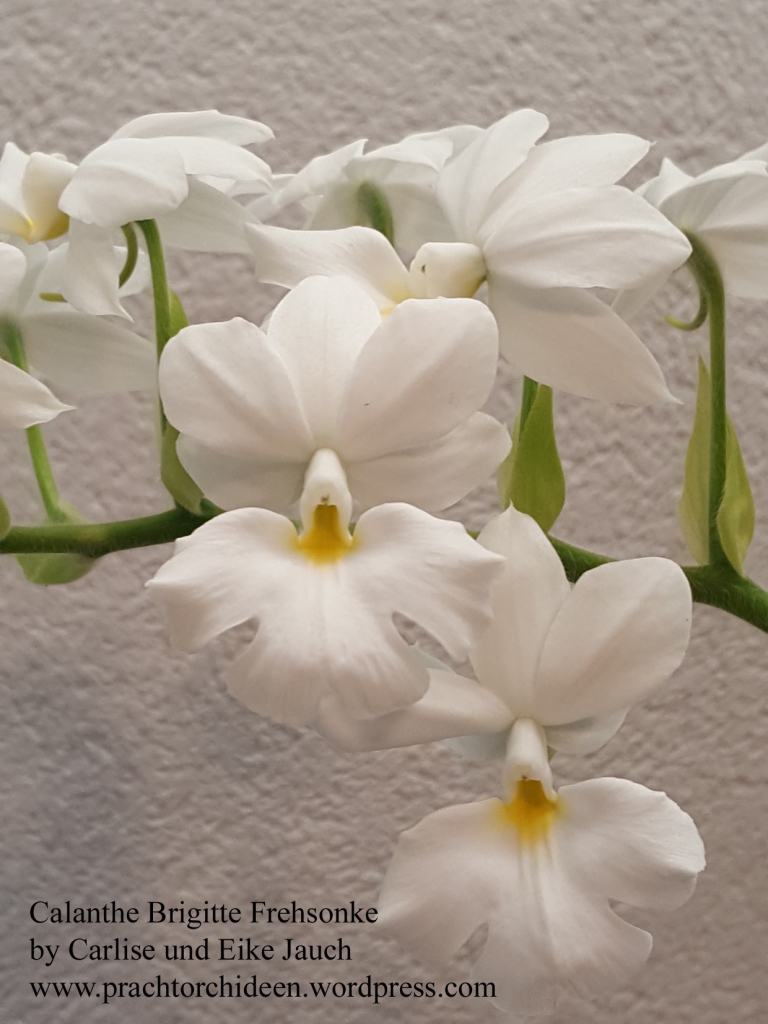
For all lovers of Preptanthe this is simply a must to have: Calanthe Brigitte Frehsonke. An approximately 80 cm long inflorescence displays more than 20 big flowers. We are deeply impressed by this hybrid registered in 2021 by J. Frehsonke. There are only few breeders left that take care of Preptanthe and develope new hybrids. Calanthe Brigitte Frehsonke is for sure one of the most outstanding new Preptanthe hybrids!
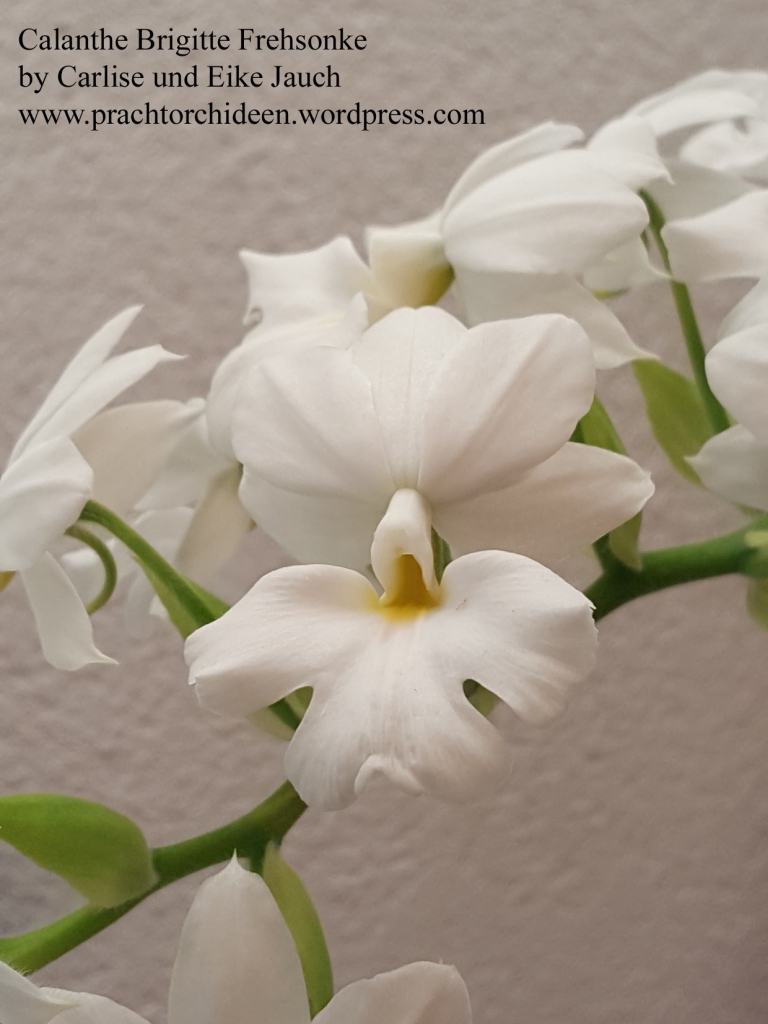
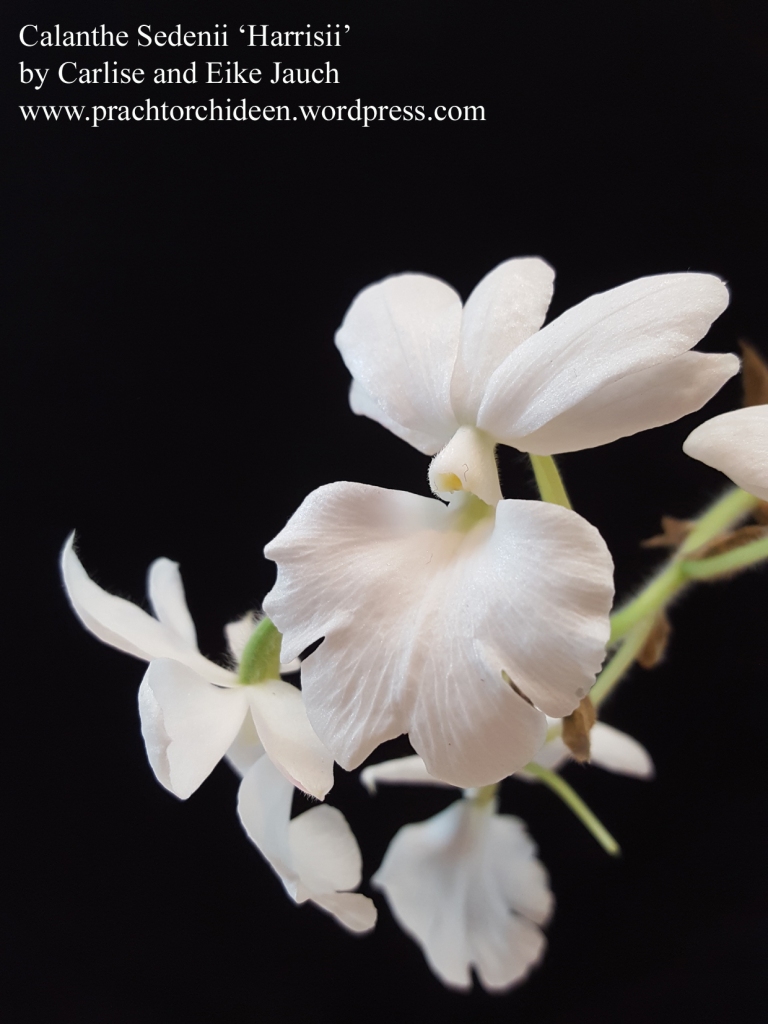
Calanthe Sedenii was registered in 1878 by Veitch as a hybrid of Calanthe Veitchii and Calanthe vestita. There are different clones of Calanthe Sedenii, the one we grow in our collection has big pure white flowers and was sold as Calanthe Sedenii ‘Harrisii’. It is a Preptanthe that drops it leaves in winter. The inflorescece is formed at the bottom of the naked pseudobulb. We do not water for about three months until the new growth forms.
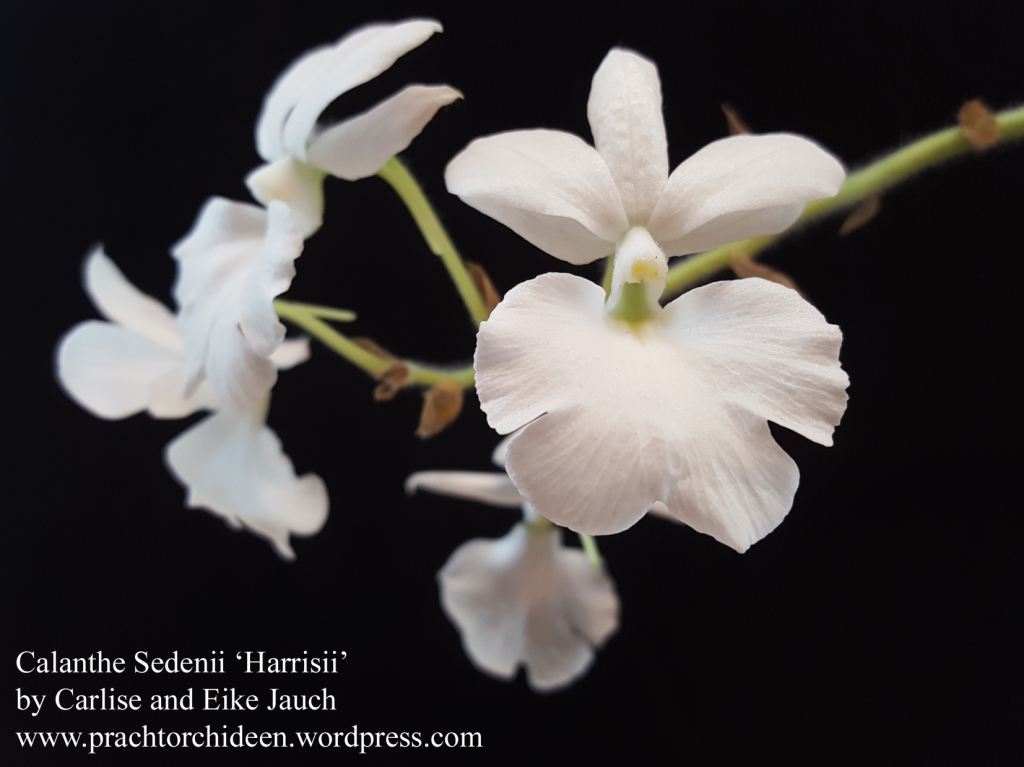
The shape of the lip is a heritage of Calanthe rosea
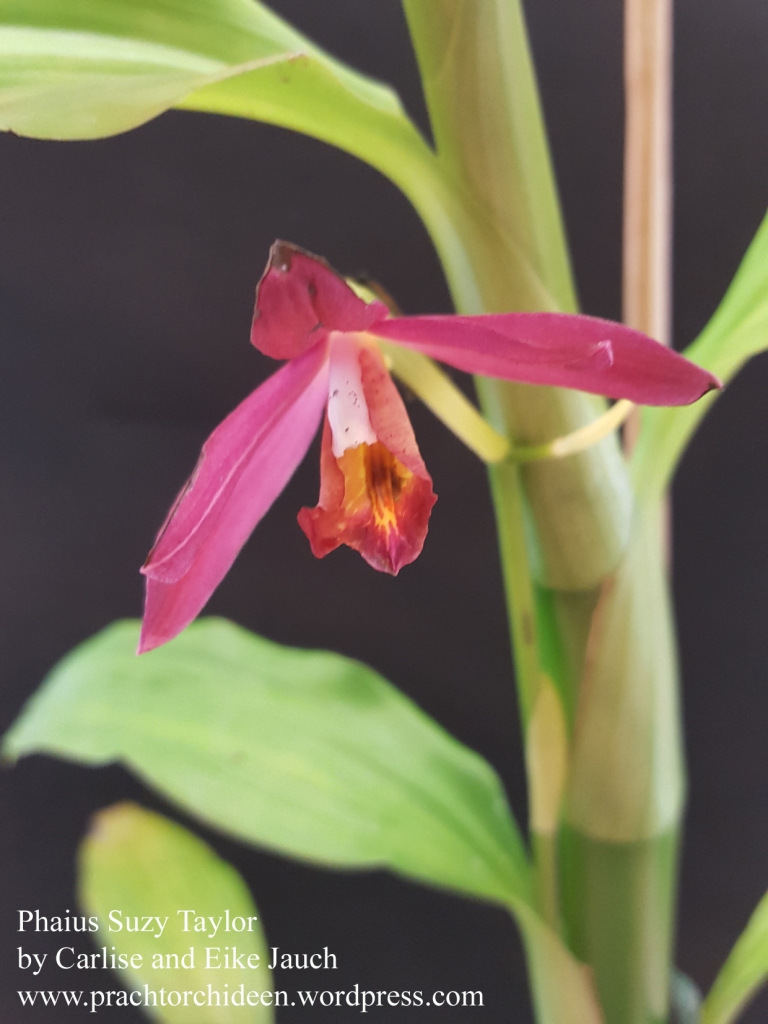
Phaius Suzy Taylor ( Phaius tonkinensis × Phaius mishmensis) is a primary hybrid of two Phaius Section Limatodes (Blume) J.J. Sm., Orch. Java: 197 (1905). Phaius of this section are plants with elongated stems. Phaius tonkinensis is growing higher than Phaius mishmensis, but the hybrid is rather of the size of Phaius mishmensis. I hope that in future this hybrid will produce inflorescences with more than one flower.
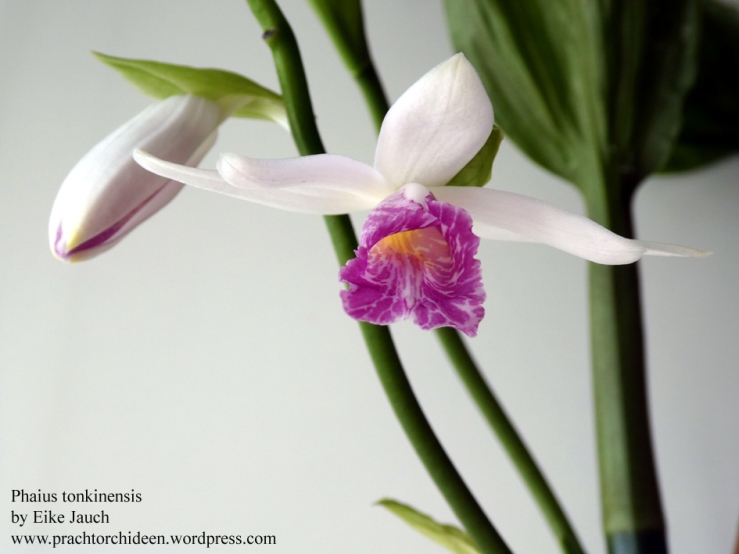
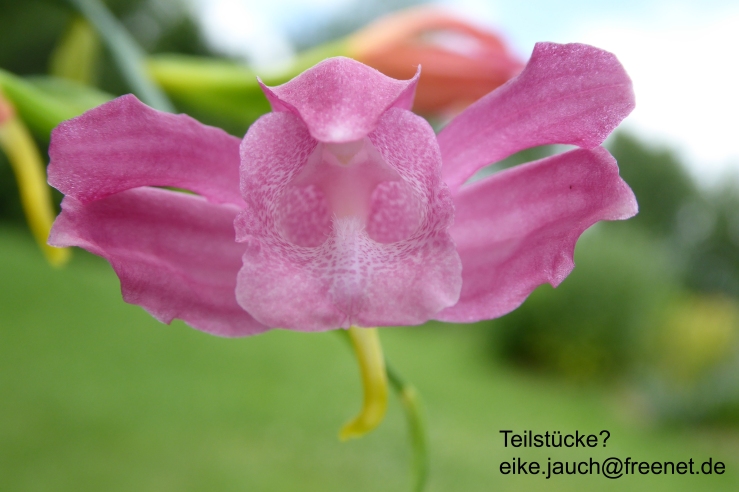
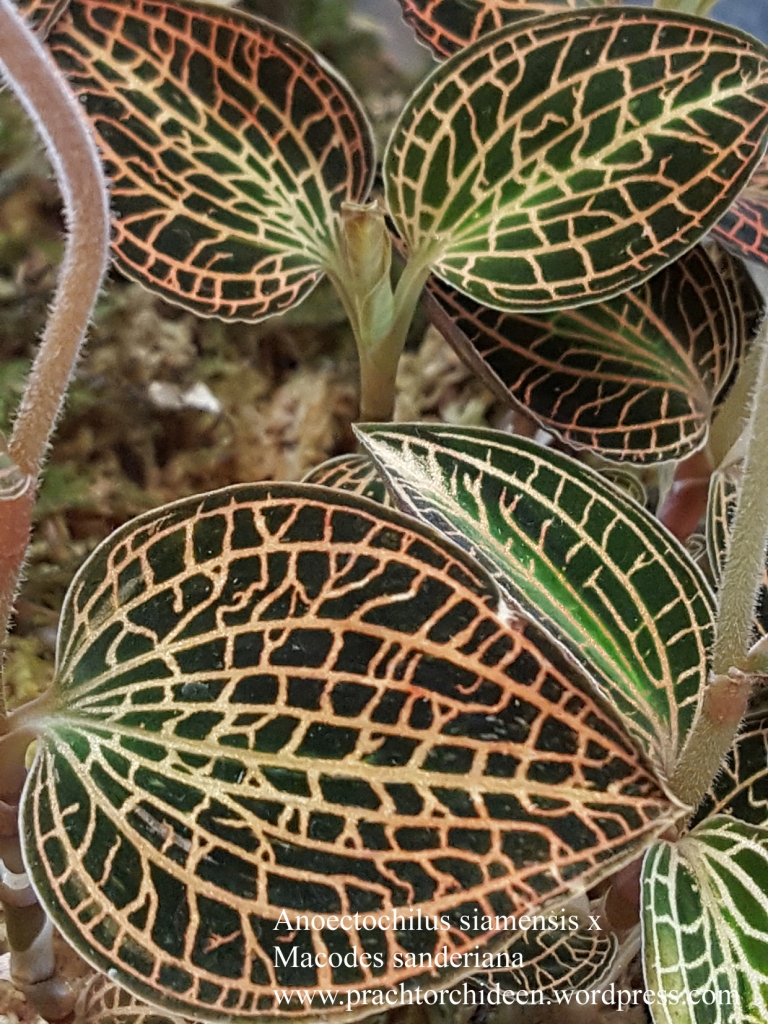
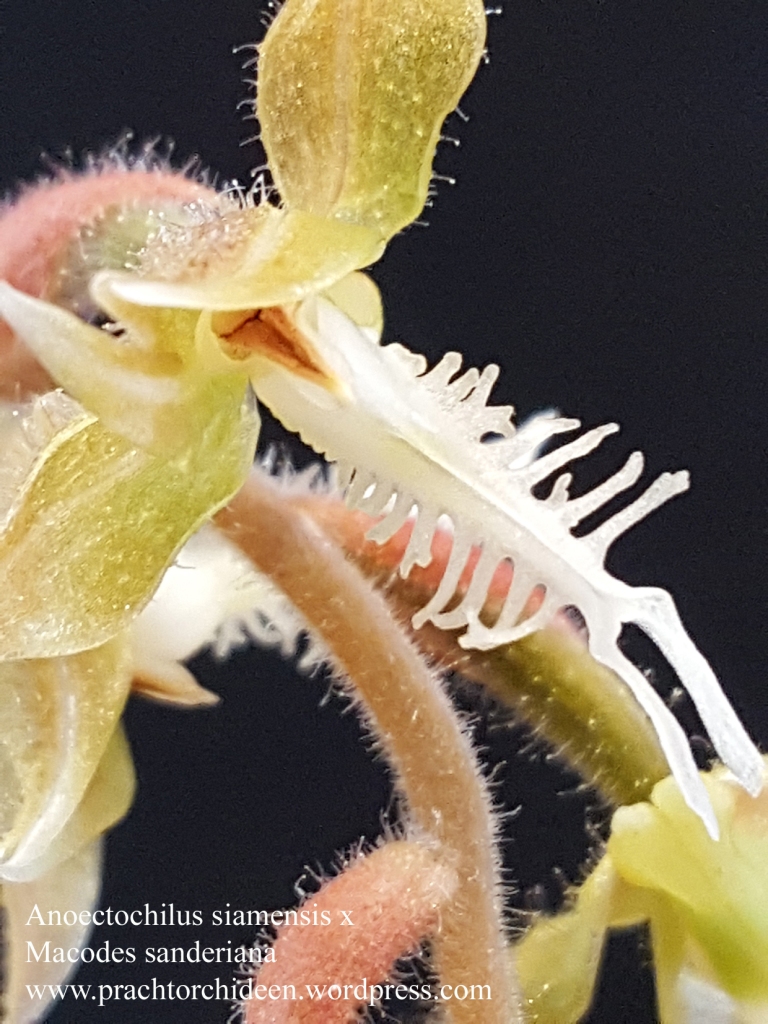
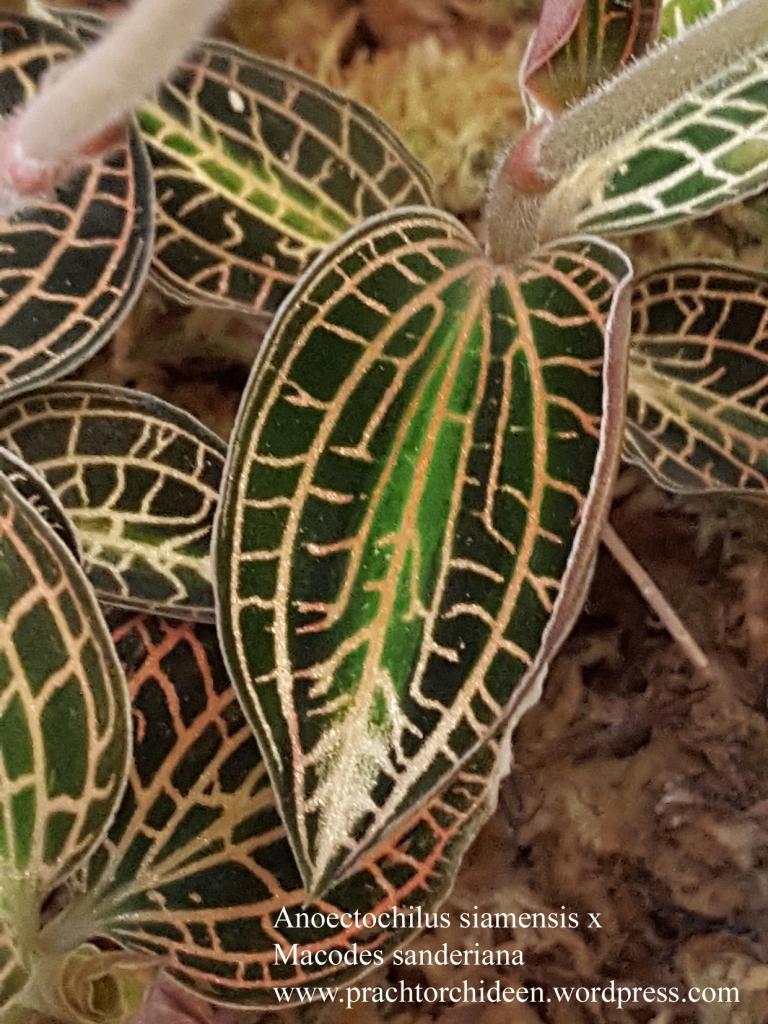
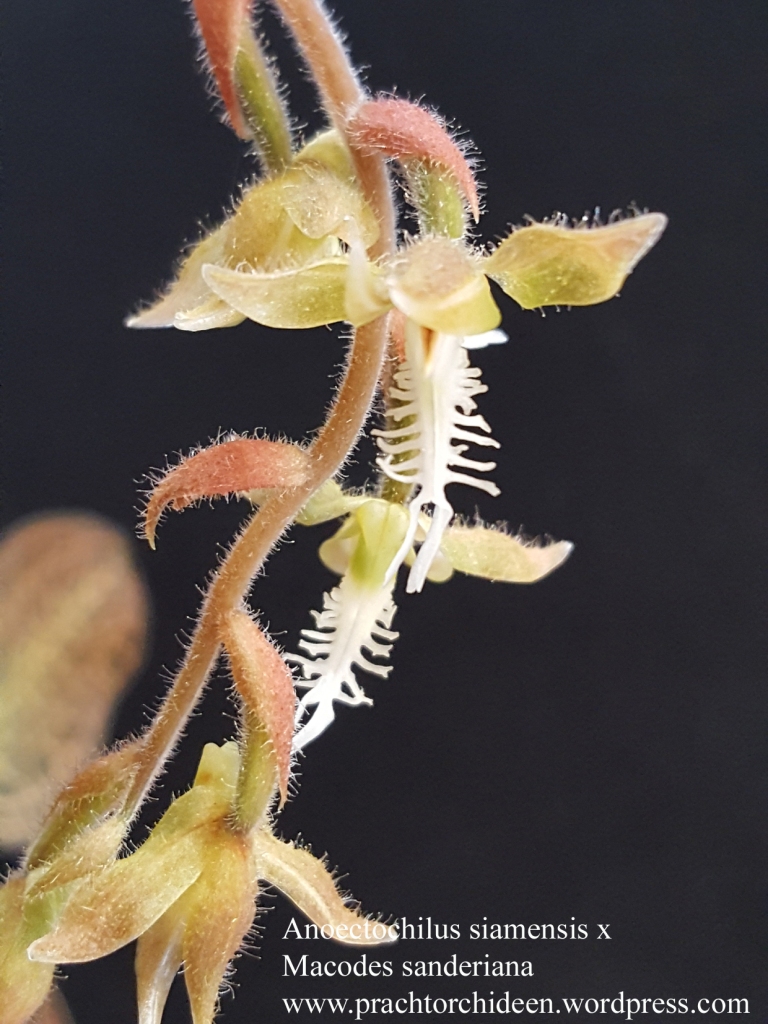
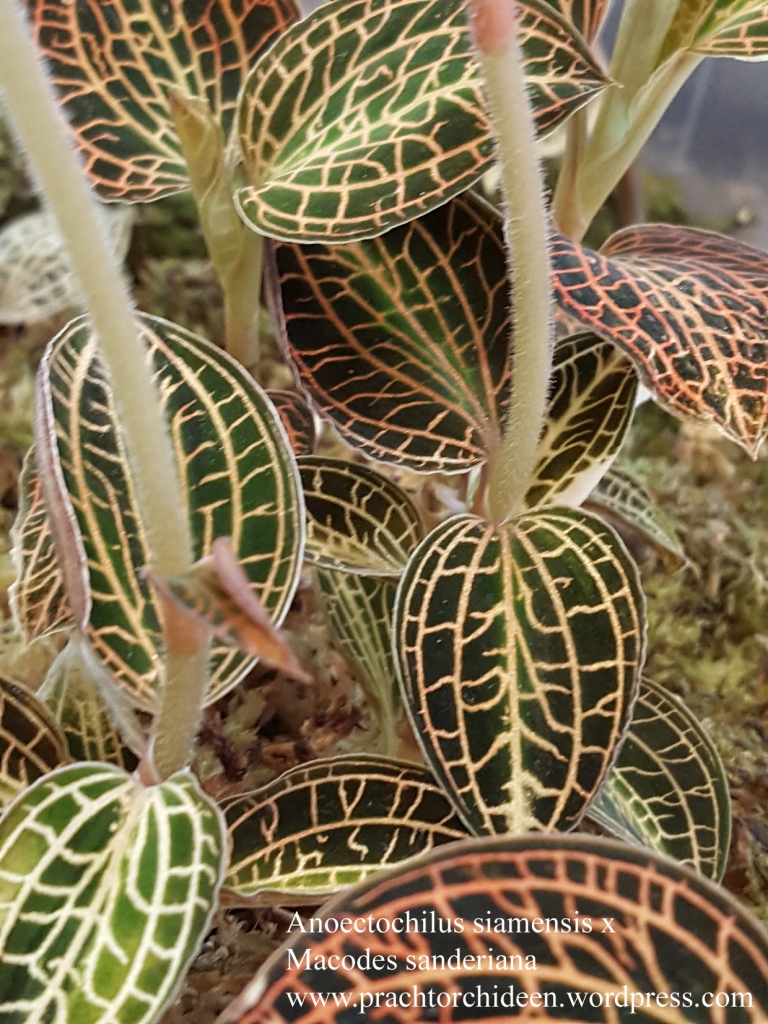
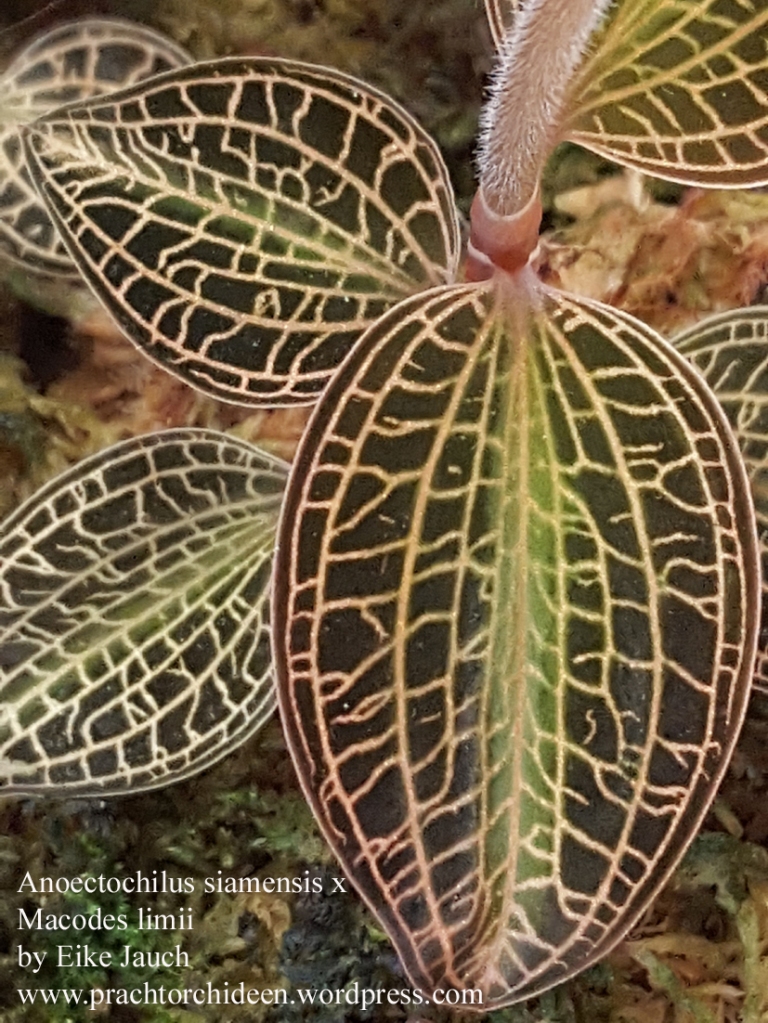

The flowers clearly show the contribution of a parental Anoectochilus
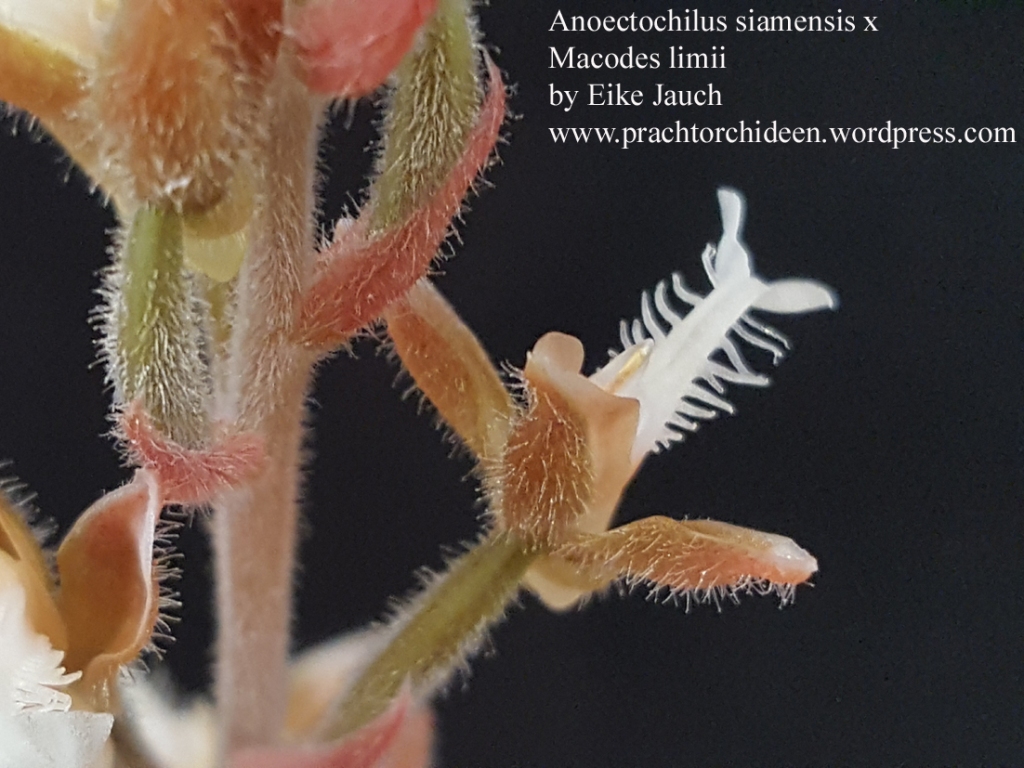
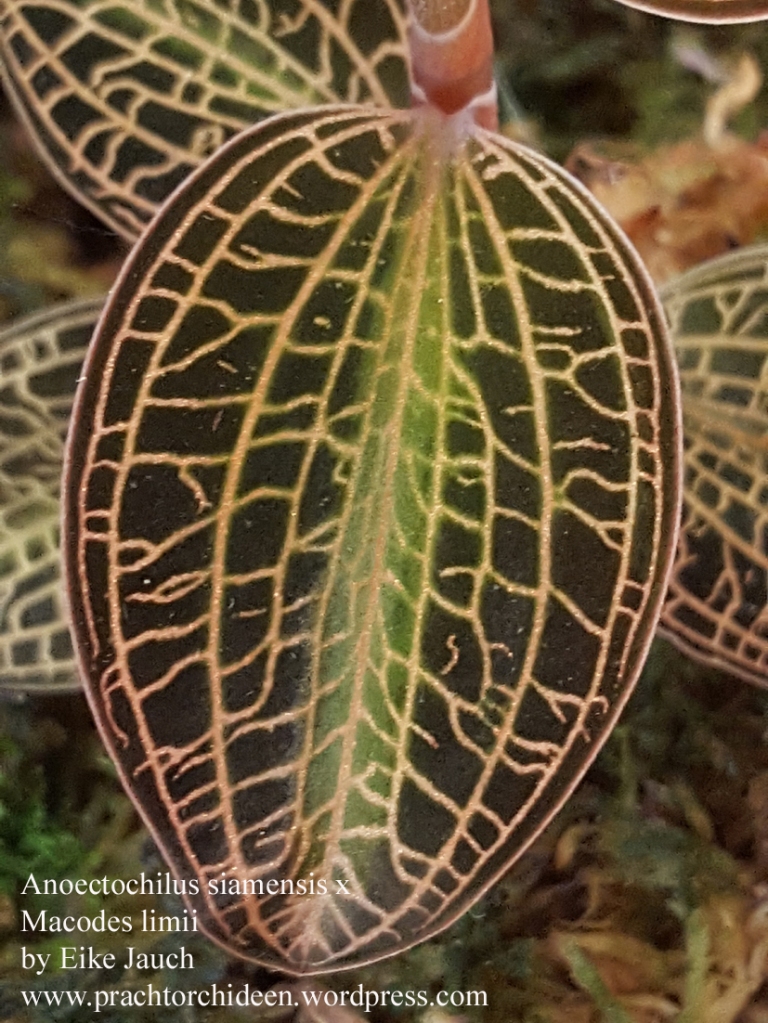
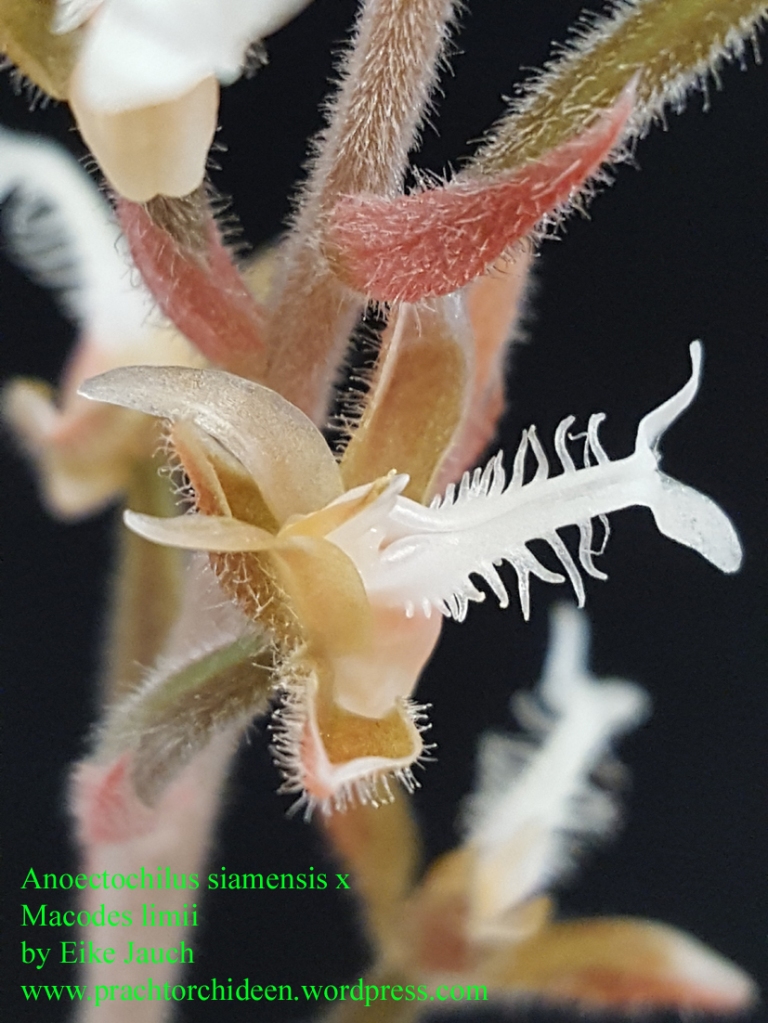
Some of the barbes bifurcate.
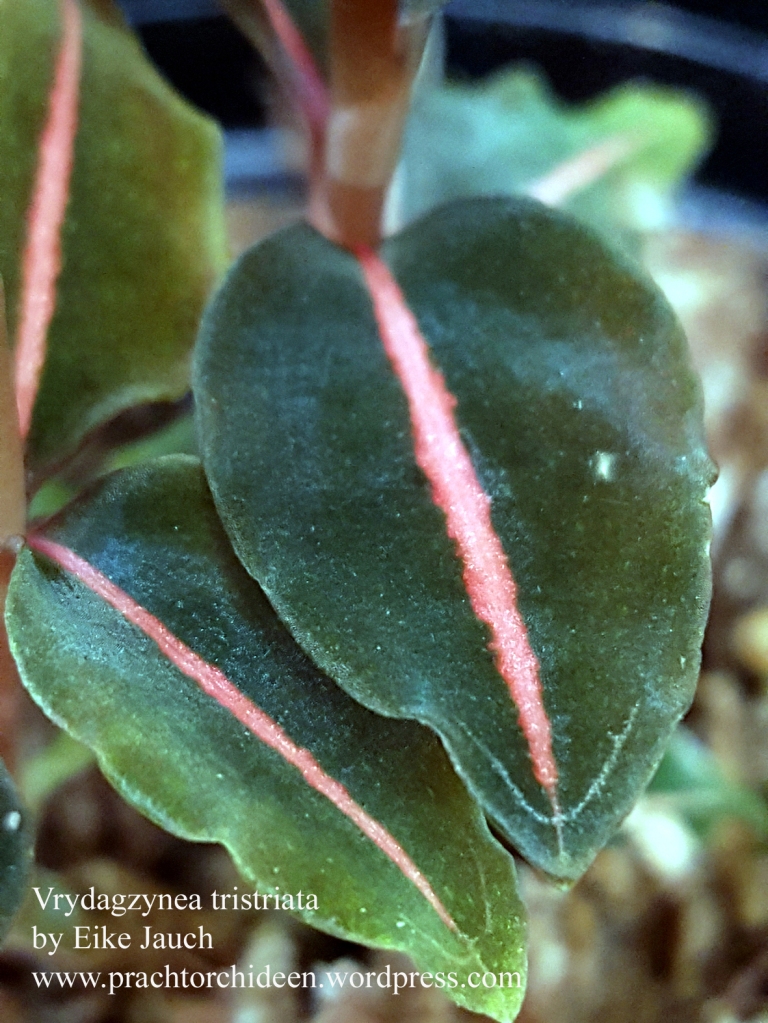
There are about 35 to 45 different species that have been described within the genus Vrydagzynea. As most of these species do not show any attractive leave colouration pattern they have little horticultural potential. Vrydagzynea tristriata Ridl. 1896 is with its three red stripes on its leaves an exception. Not always these three stripes are fully expressed, often only the middle stripe is well formed.
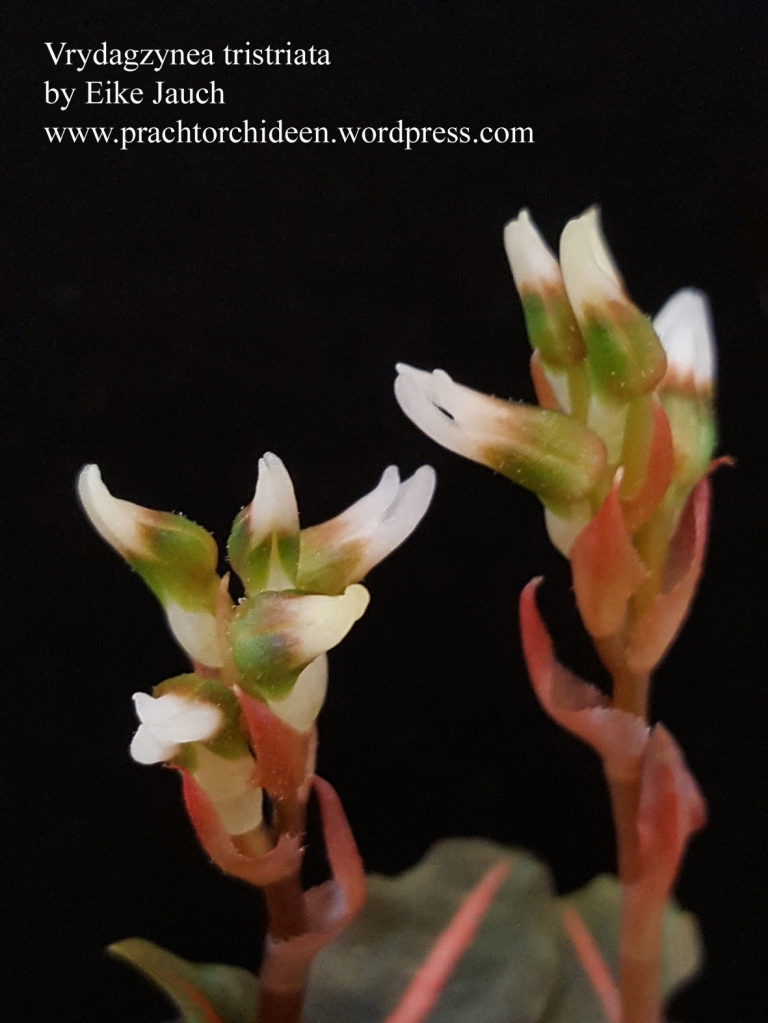
Flowers are rather small, green an white in colour and do not open widely.
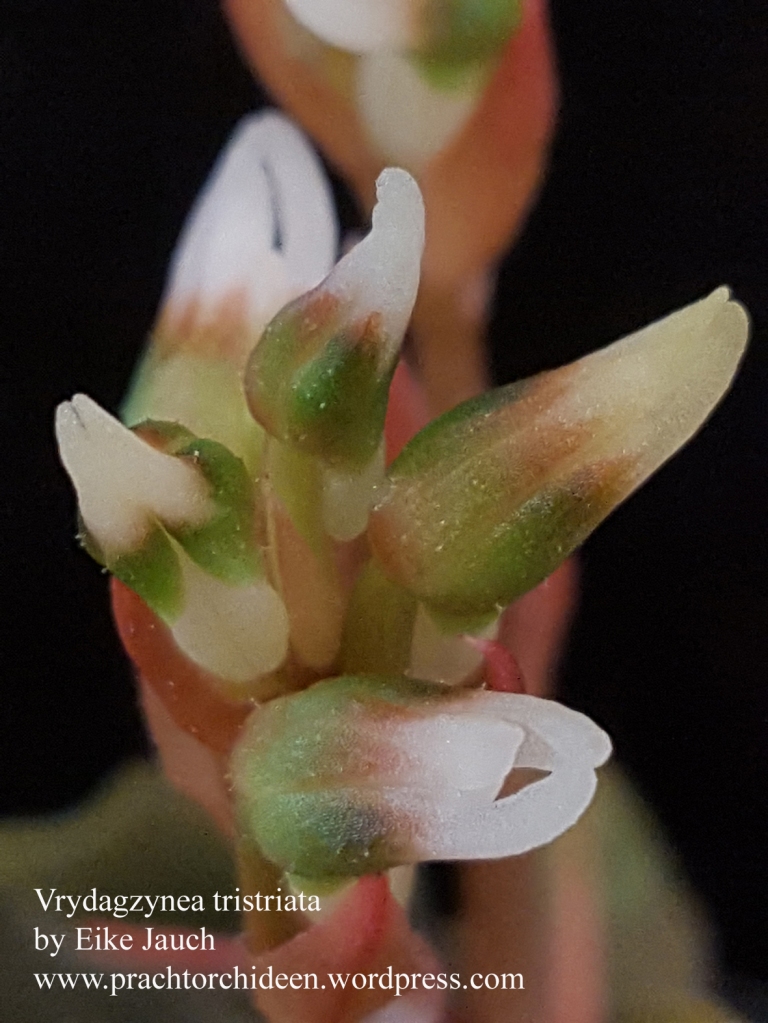
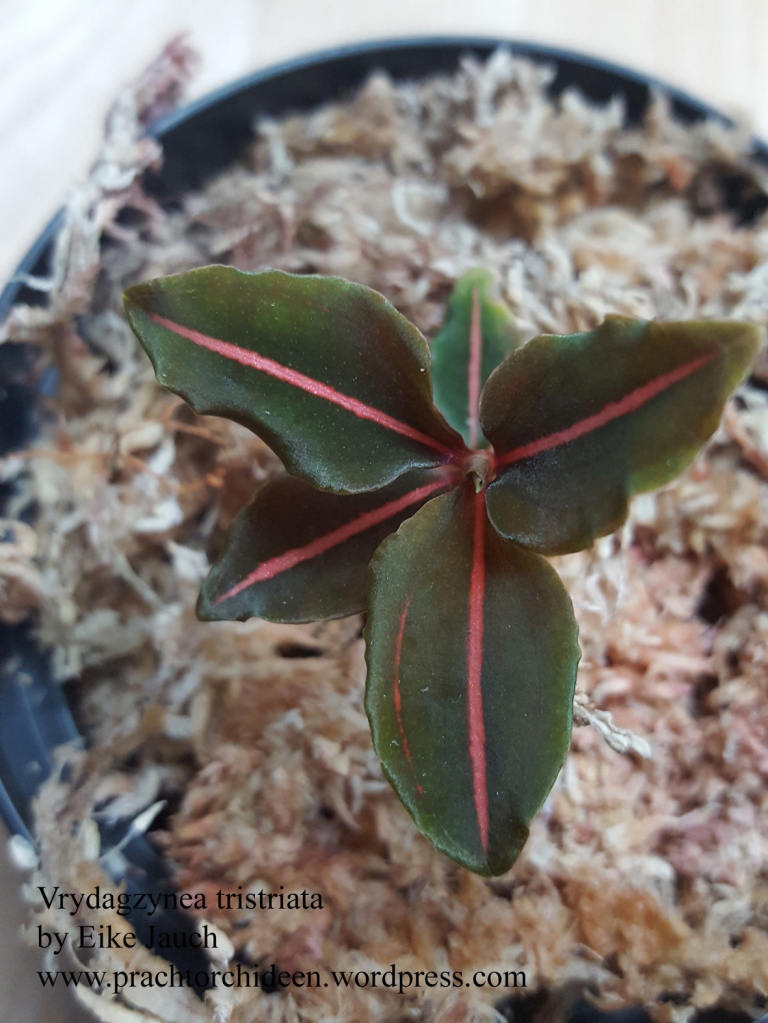
The basal part of the slightly succulent stem is often creeping, thereby forming a rhizome. The apical part of the reddish coloured stem is erect and few-leaved.
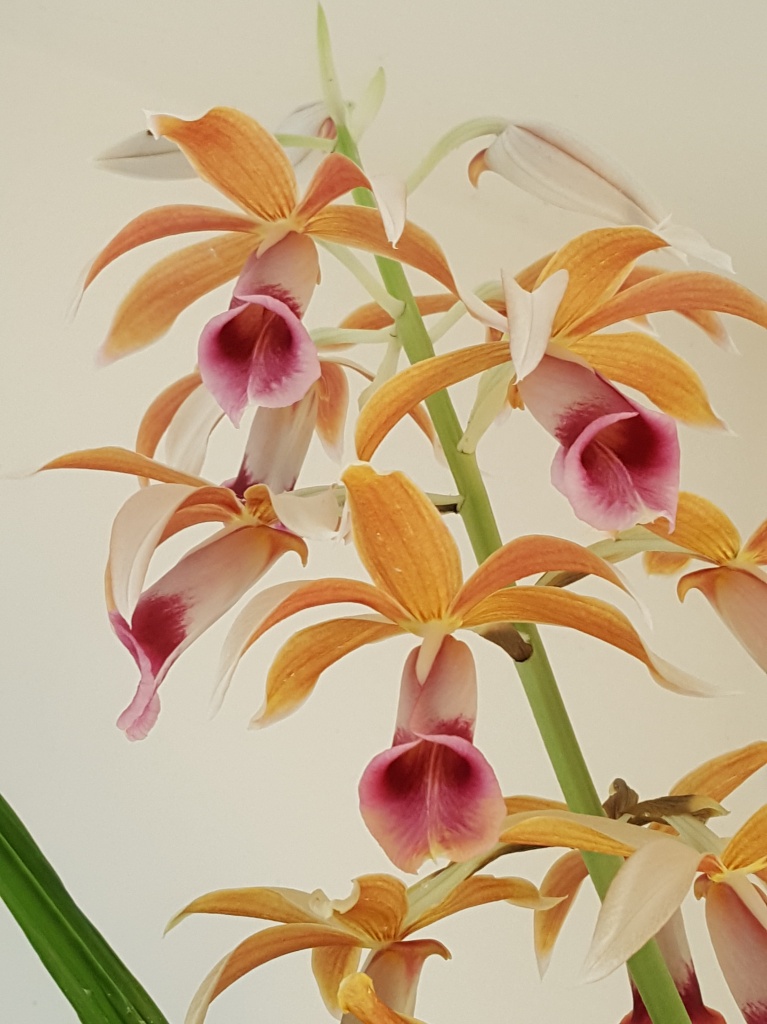
Autum time is Phaius time. One of the first Phaius to bloom this year is this Phaius tankervilleae. We just wanted to share this beautyful flowers with you. We especially like the near to golden colouration of the sepals and petals.
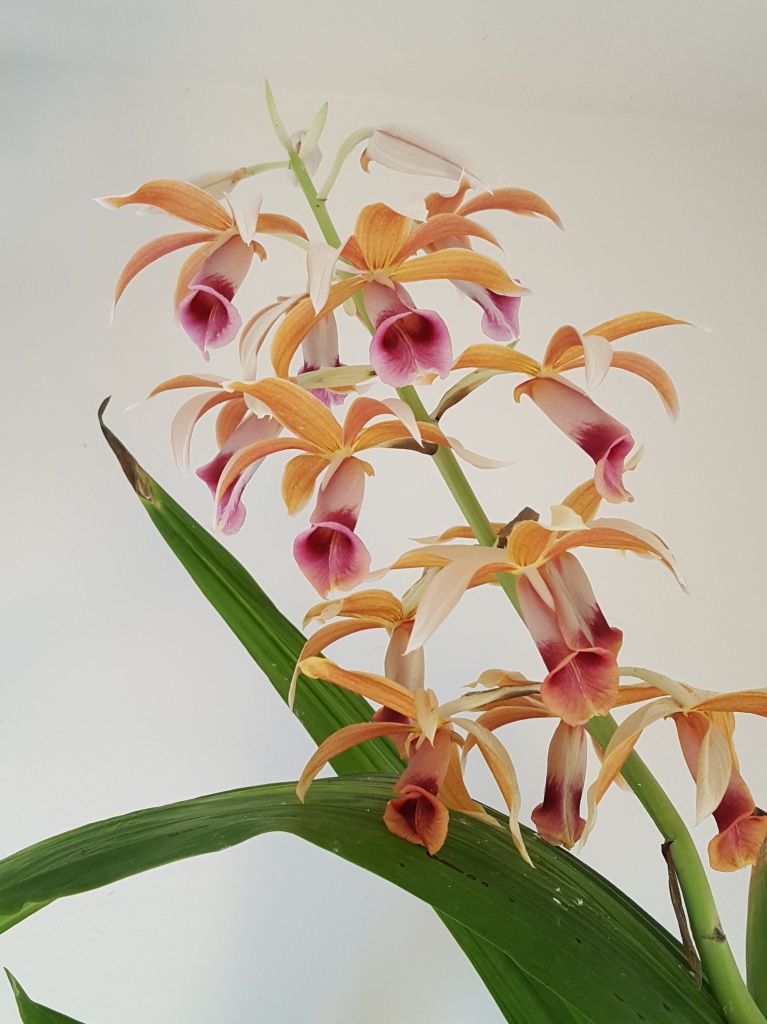
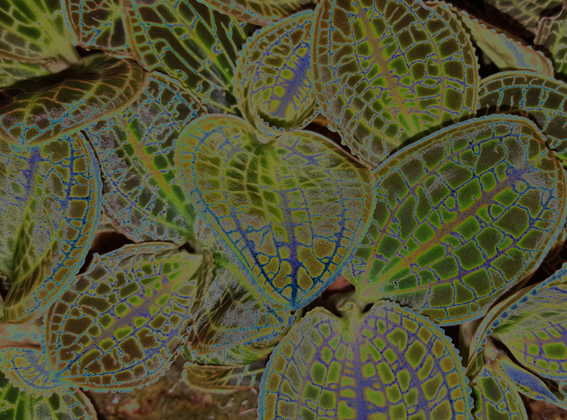
Who can guess which jewel orchid is hidden behind above picture?
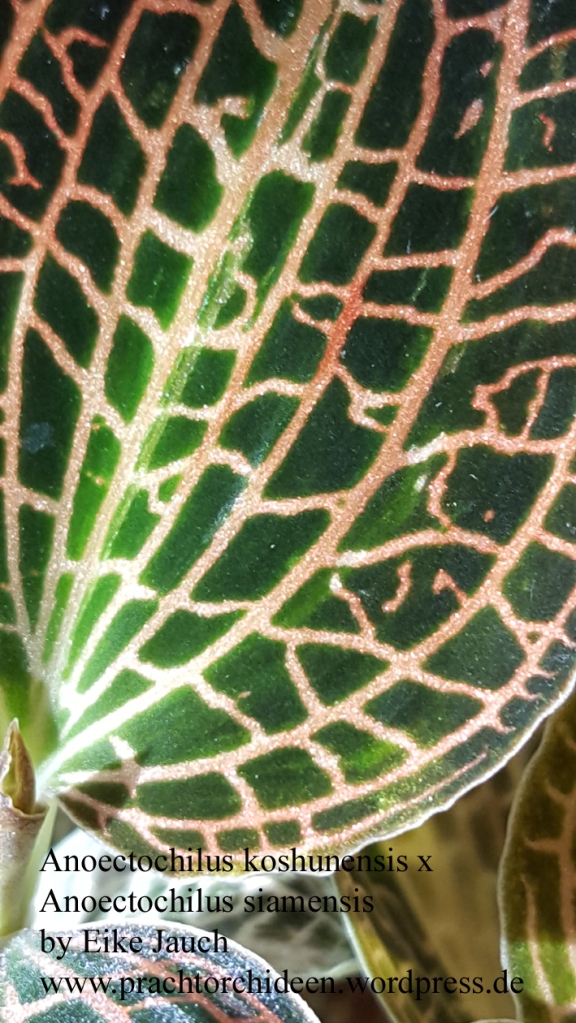
This hybrid is a real surprise to me. I obtained cuttings that were in a rather bad state, but with care they recovered and started to dipslay a nice staining pattern of their leaves.
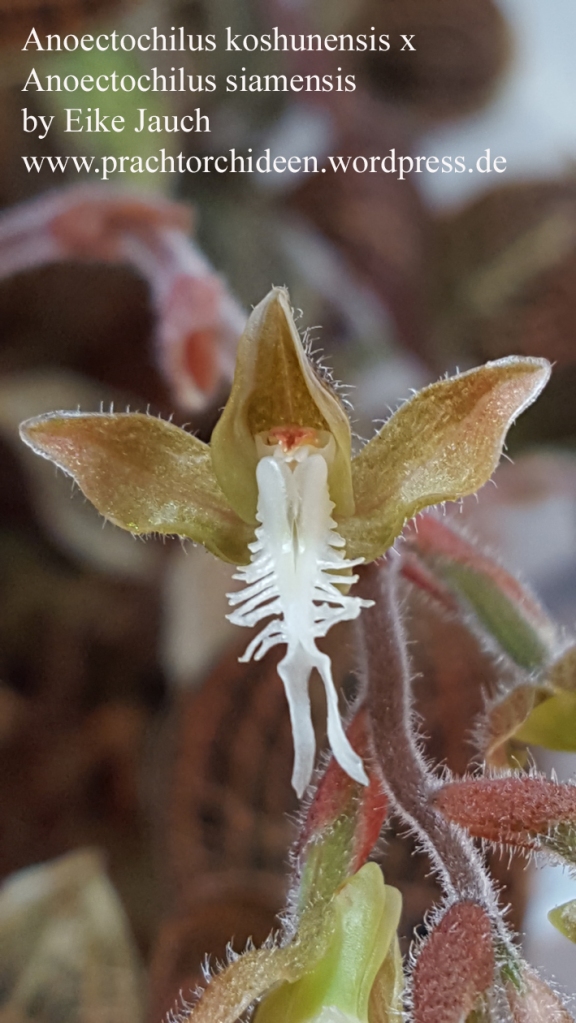
Just last week they started to open their flowers. In my eyes these are quite attractive and of a nice size. The flowers of Anoectochilus koshunensis show a rather simple morphology, I therefore guess that the complex structure of the lip is a heritage of Anoectochilus siamensis.
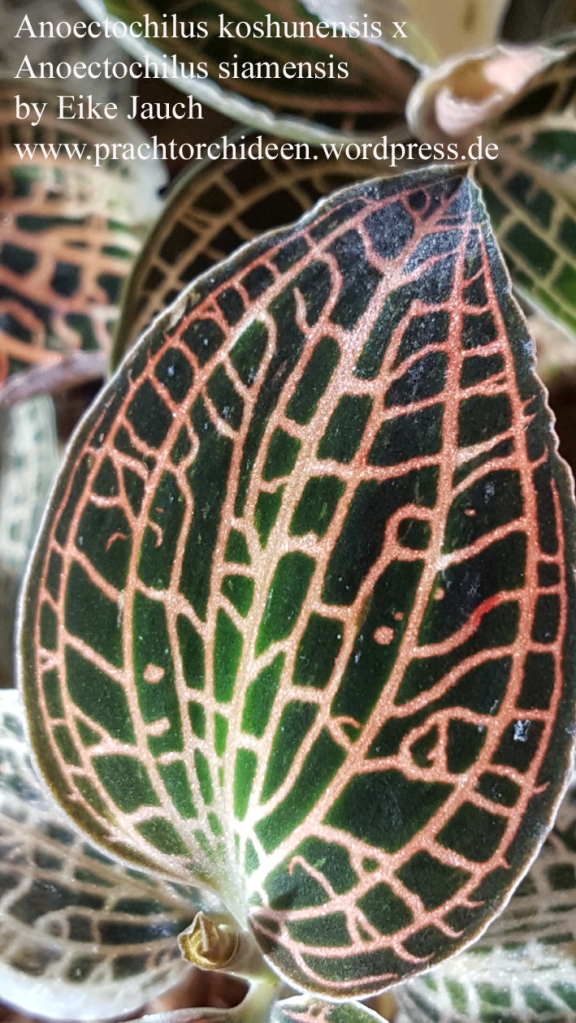
Anoectochilus koshunensis is native to Taiwan and the Ryukyu islands. I wish I could get hold of this species.
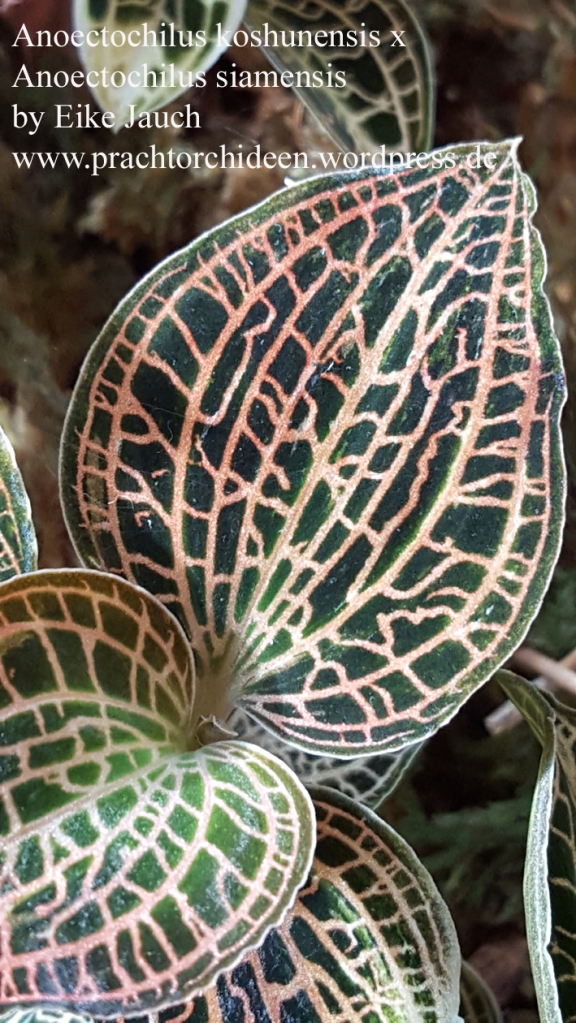
Anoectochilus siamensis is a synonym of Anoectochilus albolineatus. This parental plant contributes the fantastic venation of the leaves.
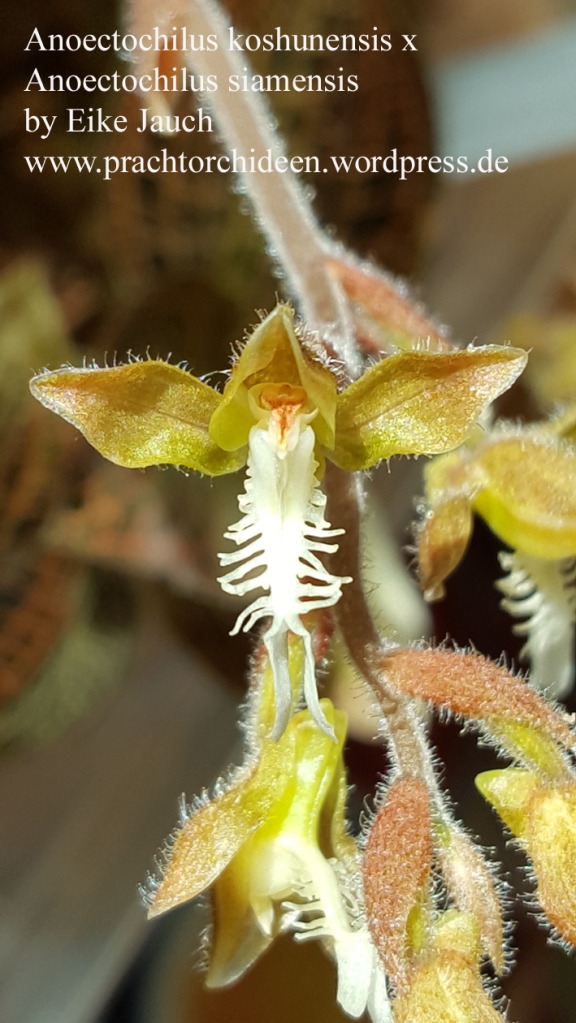
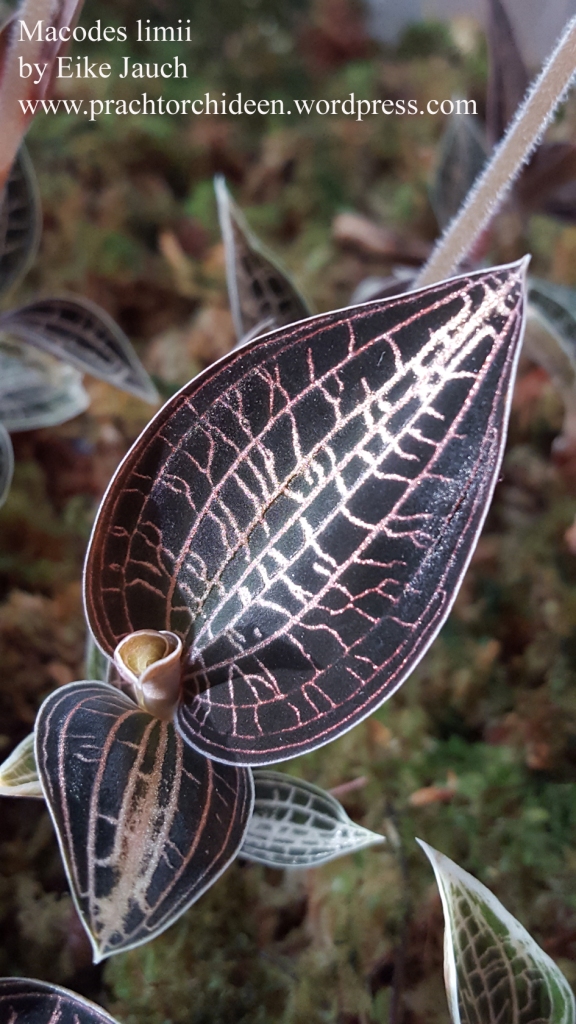
Three species of Macodes are recorded from Borneo, and Macodes limii is endemic to Sabah. It is a terrestrial orchid that can be found in the area of hill forest and lower montane ridge forest. Macodes limii grows in light shade at an elevation range between 250 m and 1000 m.
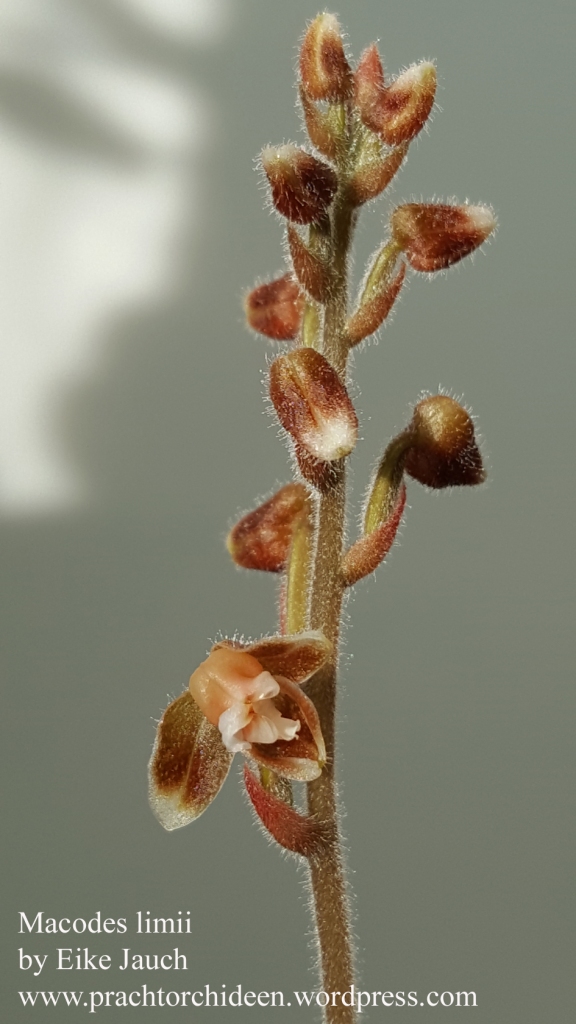
Macodes limii was described in 2011 in the second volume of ‘The orchids of Mount Kinabalu’. Due to acute habitat destruction and over collection natural populations are severely reduced.
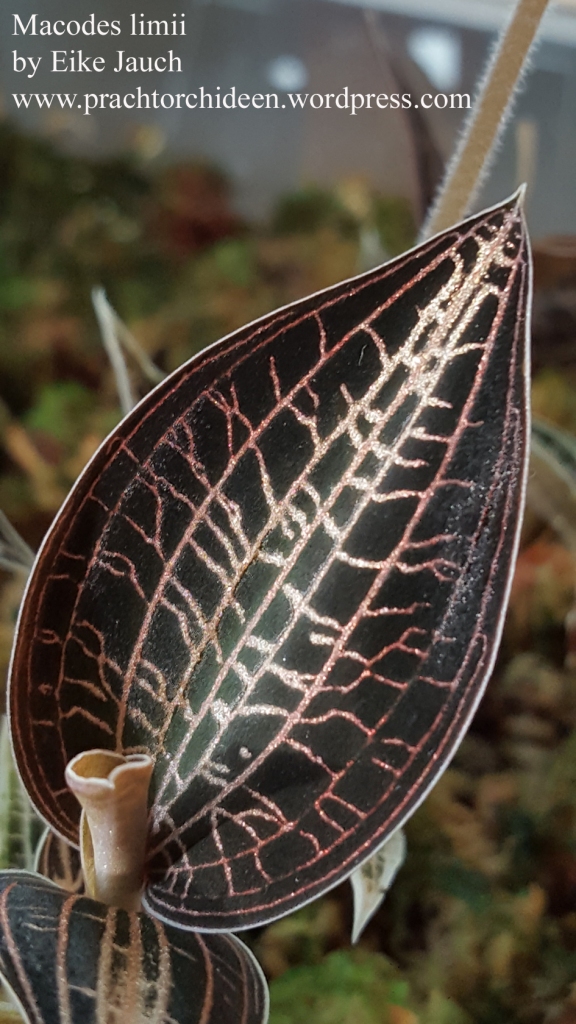
Macodes limii can produce about 25 flowers arranged on a 25 to 30 cm long inflorescence.
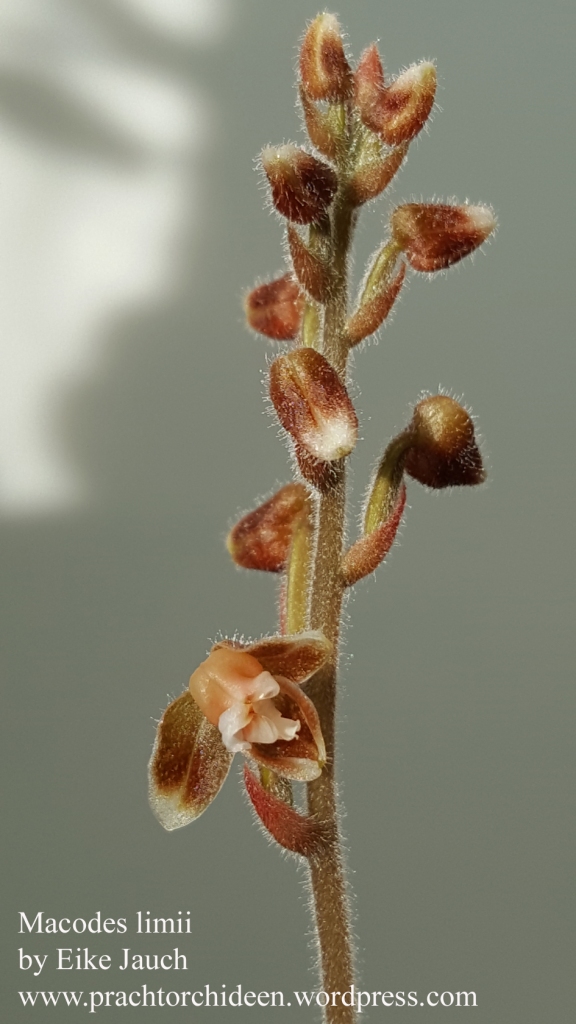
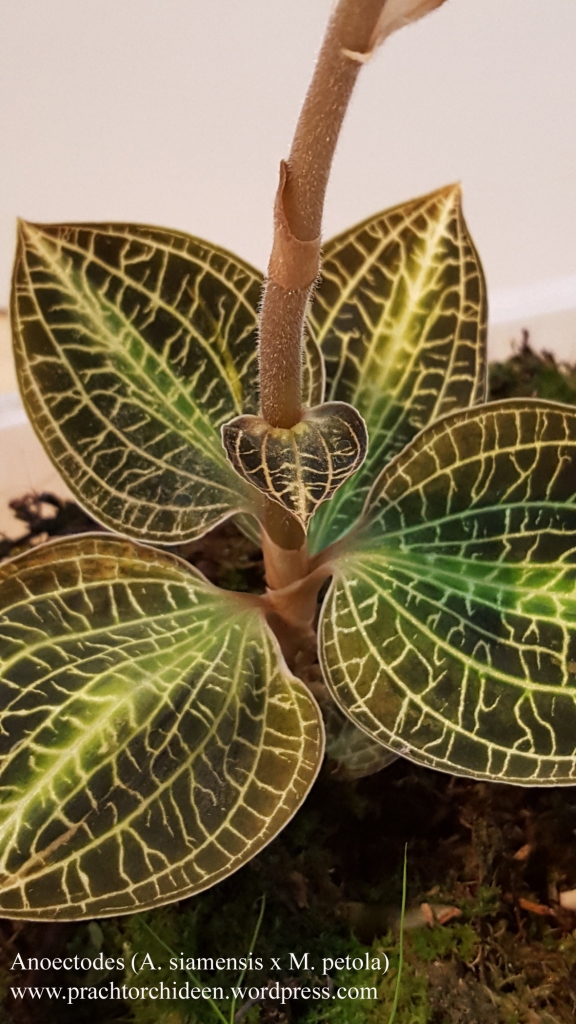
Hybrids of Anoectochilus and Macodes are called Anoectodes. Not many Anoectodes are registered: Hoosier registerd in 2006 Anoectodes Charlotte’s Web, a hybrid generated by L Glicenstein. The second registered Anoectodes is Anoectodes Turtle, registered by M.E.Dorris in 2011.
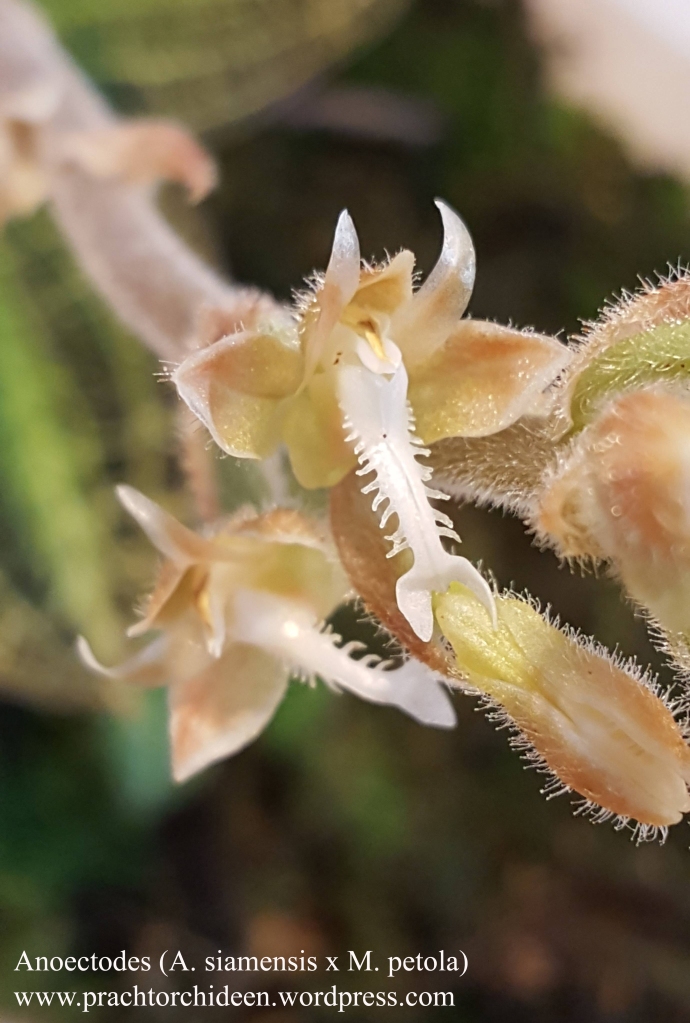
In both registered Anoectodes Macodes petola was one of the parental plants. In Charlotte’s Web, the second partner was Anoectochilus brevilabris, in Turtle, the other parental plant was Anoectochilus formosanus. The shown Anoectodes 649 is a bit difficult to interpret, as Anoectochilus siamensis is not an accepted species. Anoectochilus siamensis is used as a synonym of Anoectochilus albolineatus. This might hold true as the lip of Anoectochilus albolineatus flowers possess 8-9 filaments. However, the number of nine countable filaments is clearly exceeded in the shown Anoectodes … The leaves of Anoectodes 649 are dark green as a whole, and the area around the main vein has a beautiful yellow-green colour.
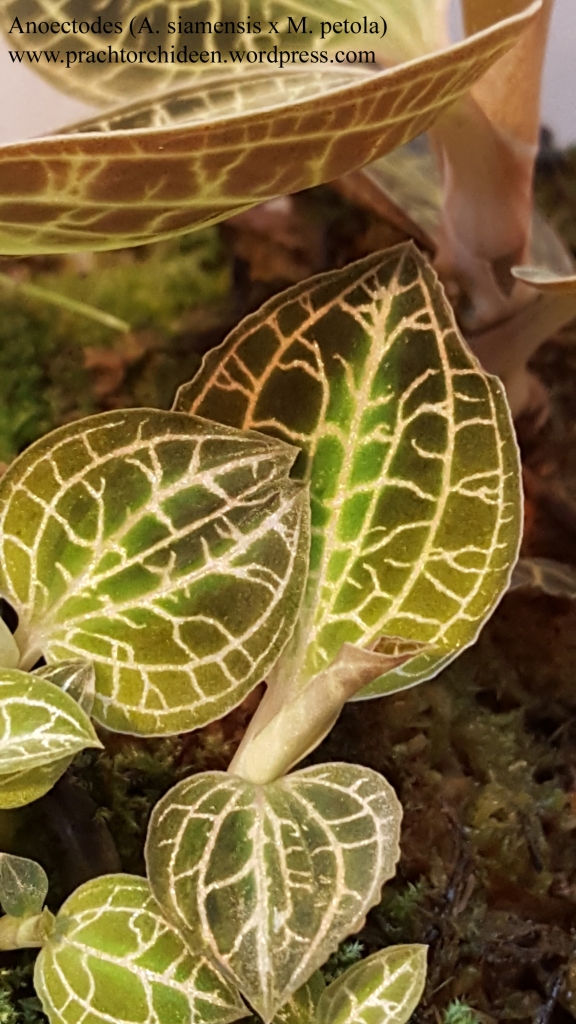
There are different varieties of Anoectochilus siamensis floating around. The venation pattern of Anoectodes 649 make it likely that the used Anoectochilus siamensis is one with a broad white center main vein. 649 seems to be a mating code, not an individual name.